LG Electronics USA E18MRE07 Refrigerator User Manual EMISSION TEST REPORT
LG Electronics USA Refrigerator EMISSION TEST REPORT
User Manual

Order Number
: GETEC-C1-17-384
FCC Part 18
Test Report Number
: GETEC-E3-17-040
Page 1 / 1
EUT Type: Refrigerator
FCC ID.: BEJE18MRE07
APPENDIX H
: USER’S MANUAL
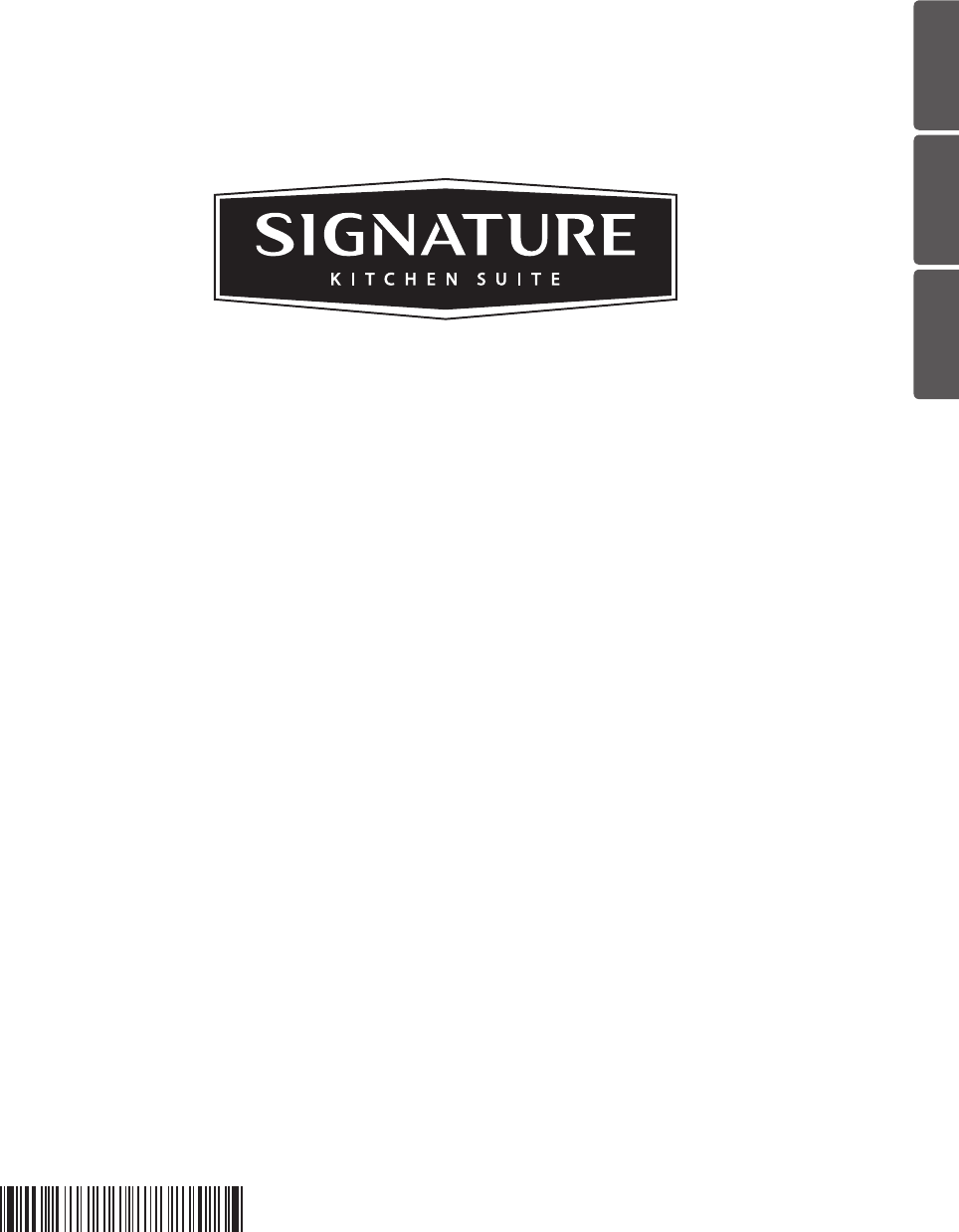
ENGLISH FRANÇAIS ESPAÑOL
MFL_00
OWNER’S MANUAL
BUILT-IN REFRIGERATOR
Read this owner's manual thoroughly before operating the appliance
and keep it handy for reference at all times.
www.thesignaturekitchen.com
SKSCR3001P
Copyright © 2017 Signature Kitchen Suite. All Rights Reserved.
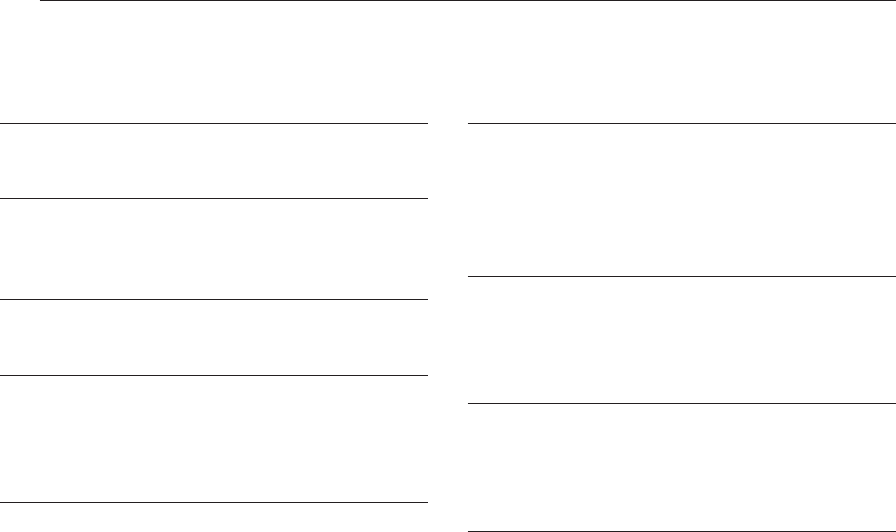
2TABLE OF CONTENTS
3 PRODUCT FEATURES
4 SAFETY INSTRUCTIONS
4 Important safety instructions
8 PRODUCT SPECIFICATIONS
9 PRODUCT OVERVIEW
9 Exterior
10 Interior
11 OPERATION
11 Before Use
12 Control Panel
14 Internal Water Dispenser
14 Storing Food
15 Drawers
17 Door Bins
17 Adjusting the Shelves
18 Adjusting the Snack Pan
19 SMART FUNCTIONS
19 SIGNATURE KITCHEN SUITE Application
21 Smart Grid Function
22 Smart Diagnosis™ Function
25 MAINTENANCE
25 Cleaning
26 Replacing the Water Filter
31 TROUBLESHOOTING
31 FAQs: Frequently Asked Questions
32 Before Calling for Service
40 WARRANTY
TABLE OF CONTENTS

3PRODUCT FEATURES
ENGLISH
PRODUCT FEATURES
Depending on the model, some of the following functions may not be available.
FILTERED WATER
The water dispenser dispenses fresh, chilled water.
DOOR ALARM
The Door Alarm function is designed to prevent refrigerator malfunctioning that could occur if a refrigerator door
or freezer drawer remains open. If a refrigerator door or freezer drawer is left open for more than 60 seconds, a
warning alarm sounds at 30-second intervals.
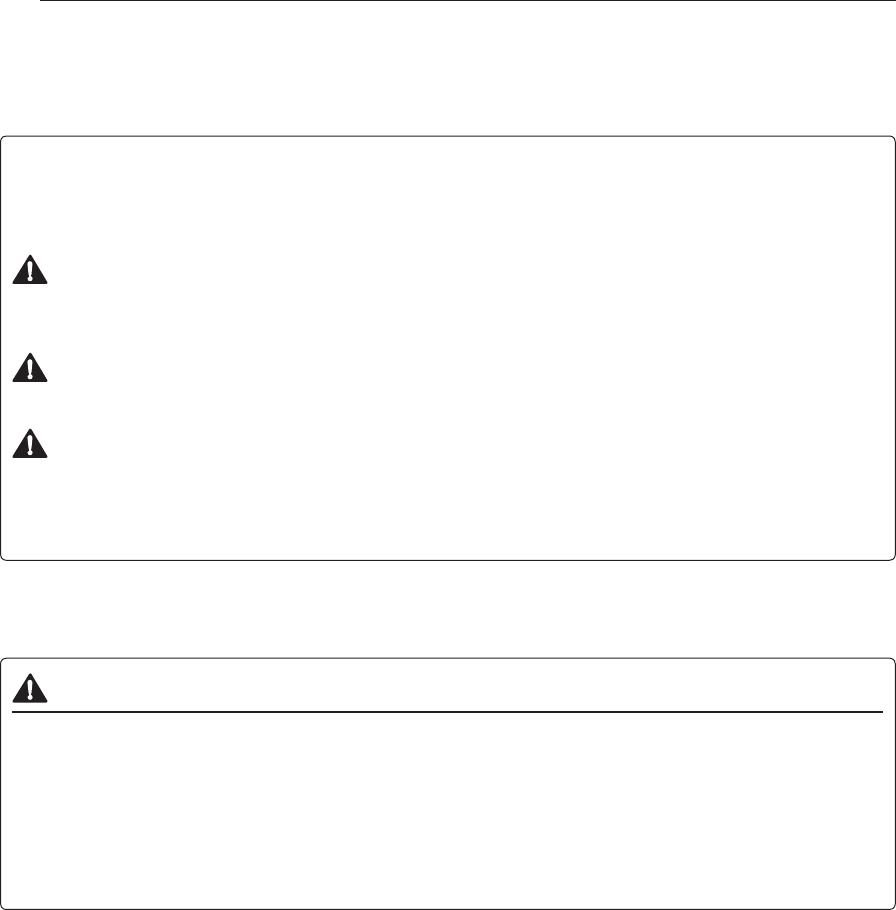
4SAFETY INSTRUCTIONS
SAFETY INSTRUCTIONS
READ ALL INSTRUCTIONS BEFORE USE
Your safety and the safety of others are very important.
We have provided many important safety messages in this manual and on your appliance. Always read and
follow all safety messages.
This is the safety alert symbol.
This symbol alerts you to potential hazards that can kill or injure you and others.
All safety messages will follow the safety alert symbol and either the word WARNING or CAUTION.
These words mean:
WARNING
You may be killed or seriously injured if you do not follow instructions.
CAUTION
You may be injured or cause damage to the product if you do not follow instructions.
All safety messages will tell you what the potential hazard is, tell you how to reduce the chance of injury, and
tell you what may happen if the instructions are not followed.
IMPORTANT SAFETY INSTRUCTIONS
WARNING
To reduce the risk of explosion, fire, death, electric shock, scalding or injury to
persons when using this product, follow basic precautions, including the following:
California Proposition 65
•This product contains chemicals known to the State of California to cause cancer and birth defects or other
reproductive harm. Wash hands after handling. (USA only)

5SAFETY INSTRUCTIONS
ENGLISH
OPERATION
•This product is not to be used for special purposes such as the storage of medicine or test materials or for
use on ships, etc.
•DO NOT allow children to climb, stand, or hang on the refrigerator doors or on the shelves in the
refrigerator. They could damage the refrigerator and seriously injure themselves.
•Do not allow children to climb into the refrigerator. They could be trapped and suffocated.
•Children should be supervised to ensure that they do not play with the refrigerator.
•Keep ngers out of pinch point areas; clearances between the doors and cabinets are necessarily small. Be
careful closing doors when children are nearby.
•Do not touch frozen food or the metal parts in the freezer compartment with wet or damp hands. Doing so
may cause frostbite.
•Do not refreeze frozen food that has thawed completely. Doing so may result in a serious health hazard.
•Do not use an adapter plug or plug the power plug into a multi-outlet extension cord.
•Do not use a cord that shows cracks or abrasion damage along its length or at either the plug or connector
end. Immediately have all power cords that have become frayed or otherwise damaged repaired or replaced
by qualied service personnel.
•Do not operate the refrigerator or touch the power cord with wet hands.
•Do not modify or extend the power cord.
•Do not use an uncertied power outlet. Do not plug appliance into a damaged wall outlet.
•Do not put hands, feet or other objects into the air vents or bottom of the refrigerator. Doing so could result
in personal injury or electric shock.
•In the event of a gas leak (propane/LPG), ensure the area is adequately ventilated and contact an
authorized service center before resuming use. Do not touch the refrigerator or power cord of the
refrigerator.
•Disconnect the power cord immediately and contact an authorized service center if there is a strange noise,
odor, or smoke coming from the appliance.
•Do not use any fuse (such as copper, steel wire, etc.) other than a standard fuse.
•Do not place or use an electrical appliance inside the refrigerator, unless it is of a type recommended by the
manufacturer.
•Do not put animals inside the appliance.
•Do not place heavy or fragile objects, liquid lled containers, combustible substances, or ammable objects
(such as candles and lamps) on the appliance.
•Avoid contact with any moving parts of the ejector mechanism or with the heater that releases the ice
cubes. DO NOT place ngers in the automatic icemaker when the refrigerator is plugged in.
•When dispensing ice from the dispenser, do not use a fragile container.

6SAFETY INSTRUCTIONS
•This appliance is not intended for use by persons (including children) with reduced physical, sensory or
mental capabilities, or lack of experience and knowledge, unless they have been given supervision or
instruction concerning the use of the appliance by a person responsible for their safety.
•If connected to a circuit protected by fuses, use time delay fuse.
MAINTENANCE
•Do not use a hair dryer to dry the inside of the refrigerator.
•Do not light a candle to remove odors in the refrigerator.
•In the event of a refrigerant leak, move ammable objects away from the refrigerator. Ensure the area is
adequately ventilated and contact an authorized service center.
•Keep ammable materials and vapors, such as gasoline, away from the refrigerator.
•This appliance is intended to be used in household and similar applications such as staff kitchen areas in
shops, ofces and other working environments; farm houses and by clients in hotels, motels and other
residential type environments; bed and breakfast type environments; catering and similar non-retail
applications.
•Unplug the power plug before cleaning or repairing the refrigerator.
•The refrigerator and freezer compartment lights are interior LED lighting, and service should be performed
by a qualied technician.
•Unplug the power plug immediately in the event of a blackout or thunderstorm.
•Turn the power off if water or dust penetrates into the refrigerator. Call a service agent.
•Do not store glass containers or soda in the freezer compartment. Contents may expand when frozen,
break the container and cause injury.
•Do not store, disassemble or repair the appliance yourself or allow unqualied personnel to do so.
•If the electrical supply cord is damaged, it must only be replaced by the manufacturer or its service agent or
a similar qualied person in order to avoid a hazard.
•Do not store explosive substances such as aerosol cans with a ammable propellant in this appliance.
•In case of LED, it should be replaced by service person.
DISPOSAL
•Junked or abandoned refrigerators are dangerous, even if they are sitting for only a few days. When
disposing of the refrigerator, remove the packing materials from the door or take off the doors but leave the
shelves in place so that children may not easily climb inside.
•If disposing of a refrigerator, make sure the refrigerant is removed for proper disposal by a qualied servicer.
If you release the refrigerant, you may be ned or imprisoned in accordance with the relevant environmental
law.
GROUNDING INSTRUCTIONS
•Improper connection of the equipment-grounding conductor can result in a risk of electric shock. Check with
a qualied electrician or service personnel if you are in doubt whether the appliance is properly grounded.
Do not modify the plug provided with the appliance; if it will not t the outlet, have a proper outlet installed
by a qualied electrician.
•Have a certied electrician check the wall outlet and wiring for proper grounding.
•Never unplug the appliance by pulling on the power cord. Always grip the plug rmly and pull straight out
from the outlet. Failure to do so may damage the power cord, resulting in a risk of re and electric shock.
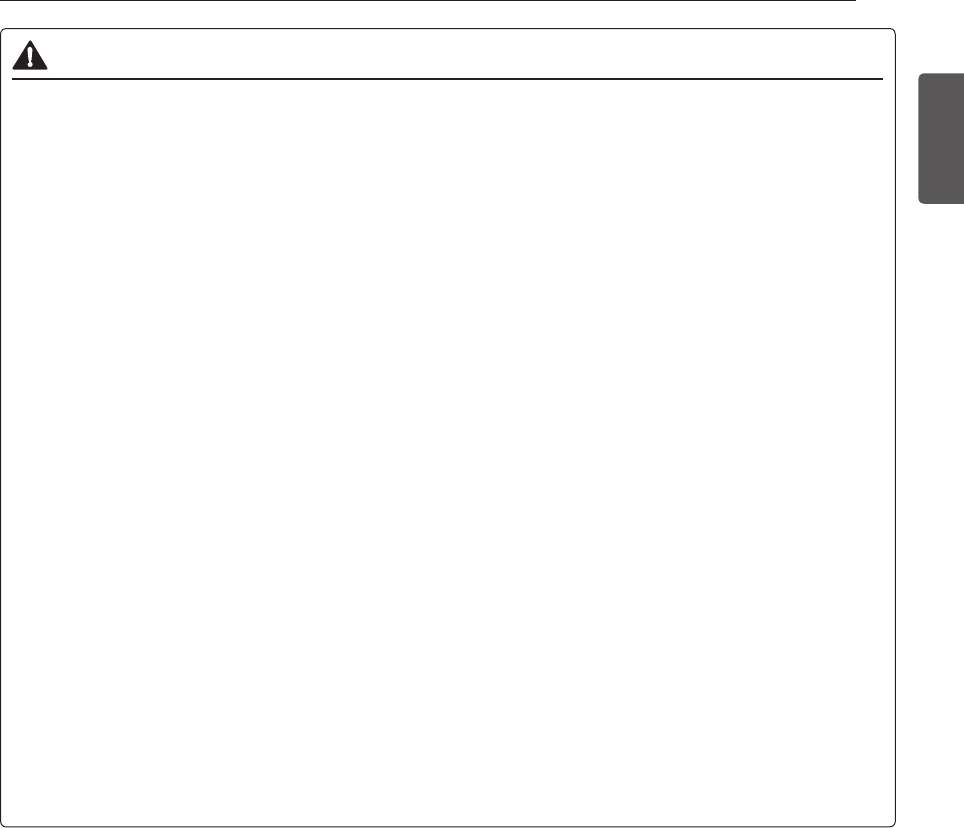
7SAFETY INSTRUCTIONS
ENGLISH
CAUTION
To reduce the risk of minor or moderate injury to persons, malfunction, or damage
to the product or property when using this product, follow basic precautions,
including the following:
INSTALLATION
•Do not install the refrigerator where there may be a danger of the unit falling.
•The refrigerator must be properly installed in accordance with the Installation Instructions.
OPERATION
•Do not use aerosols near the refrigerator.
•This appliance is intended to be used only in domestic and similar applications.
•Do not strike or apply excessive force to any glass surface. Do not touch glass surfaces if they are cracked
or broken.
•Do not overll or pack items too tightly into door bins. Doing so may cause damage to the bin or personal
injury if items are removed with excessive force.
•Do not overll the appliance with food. Doing so may cause personal injury or property damage.
•Do not hang on to or place heavy objects on the refrigerator’s dispenser.
MAINTENANCE
•Do not use strong detergents like wax or thinners for cleaning. Clean with a soft cloth.
•Remove foreign objects (such as dust and water) off the prongs of the power plug and contact areas. Do
not use a wet or damp cloth when cleaning the plug.
•Do not spray water directly on the inside or outside of the refrigerator.
•Do not clean glass shelves or covers with warm water when they are cold. They may break if exposed to
sudden temperature changes.
SAVE THESE INSTRUCTIONS
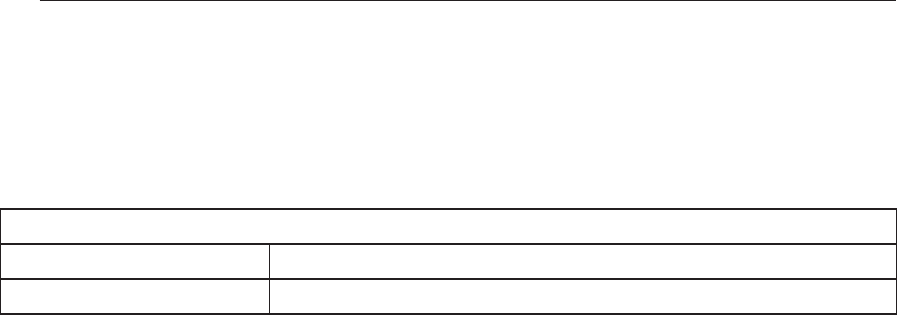
8PRODUCT SPECIFICATIONS
PRODUCT SPECIFICATIONS
The appearance and specifications listed in this manual may vary due to constant product improvements.
Electrical requirements: 115 V, 60 Hz
Min. / Max. water pressure: 20 - 120 psi (138 - 827 kPa)
Model SKSCR3001P
Description Built-in, Refrigerator
Net weight 452 lb (205 kg)
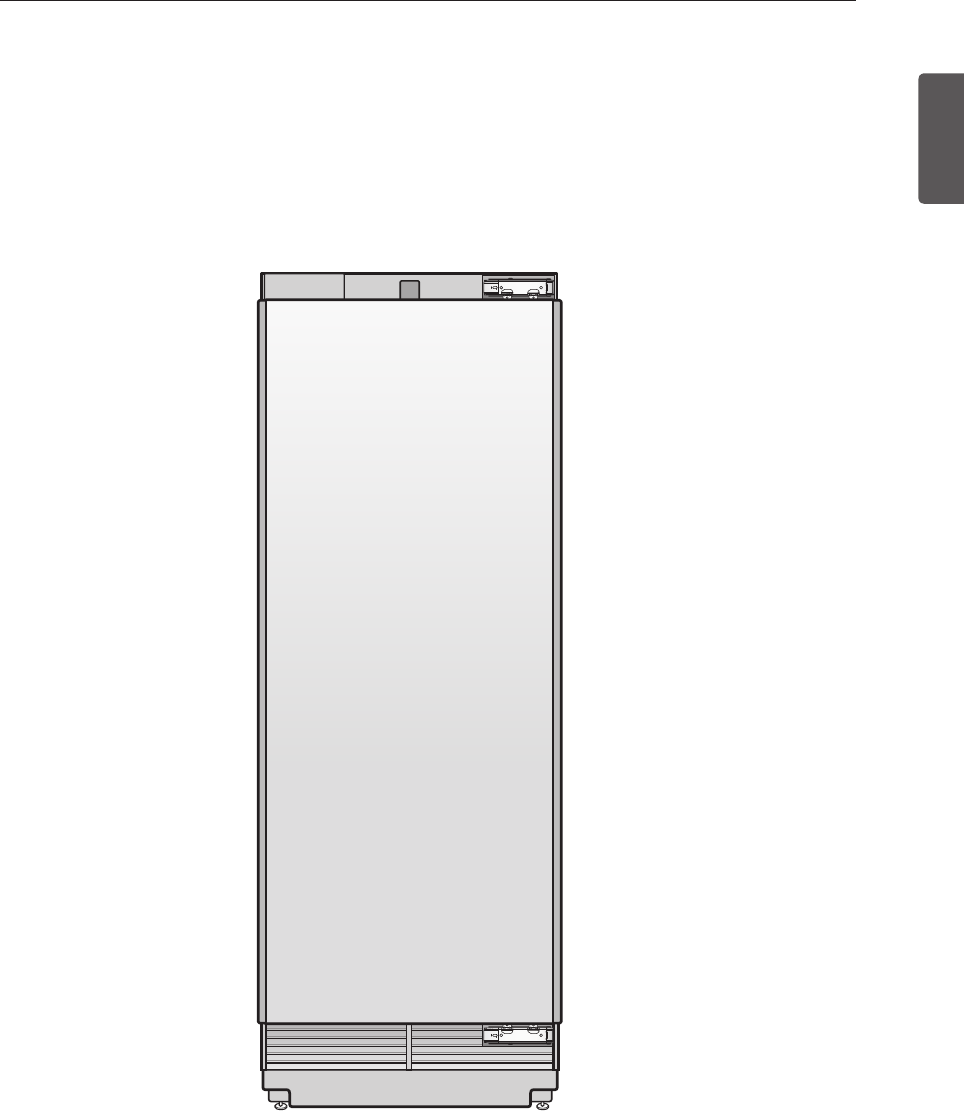
9PRODUCT OVERVIEW
ENGLISH
PRODUCT OVERVIEW
The images in this guide may be different from the actual components and accessories, which are subject to
change by the manufacturer without prior notice for product improvement purposes.
Exterior
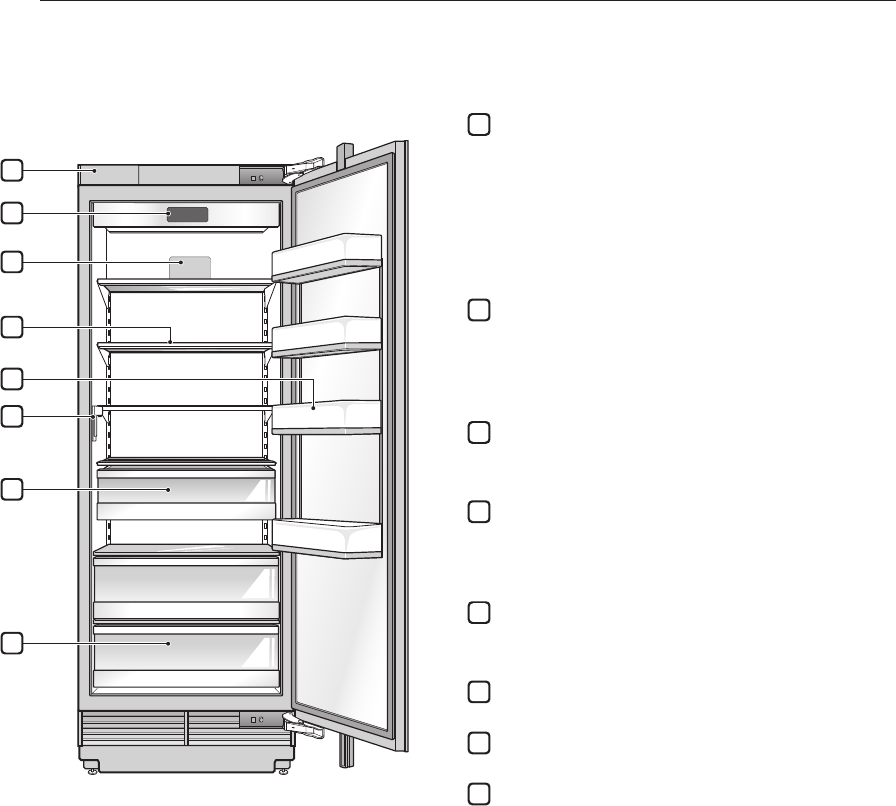
10 PRODUCT OVERVIEW
1
Water filter
Purify water.
NOTE
•The lter should be replaced every 6 months.
See the Replacing the Water Filter section in
this manual for details.
2
Control Panel
Sets the refrigerator and freezer temperatures,
the water filter condition and the dispenser
mode.
3
LED interior lamps
Light up the inside of the refrigerator.
4
Adjustable Refrigerator Shelf
The refrigerator shelves are adjustable to meet
individual storage needs.
5
Movable Door Bin
Store chilled food or drinks.
6
Snack Pan
7
Drawer
8
Internal Water Dispenser
1
2
3
6
7
8
4
5
Interior
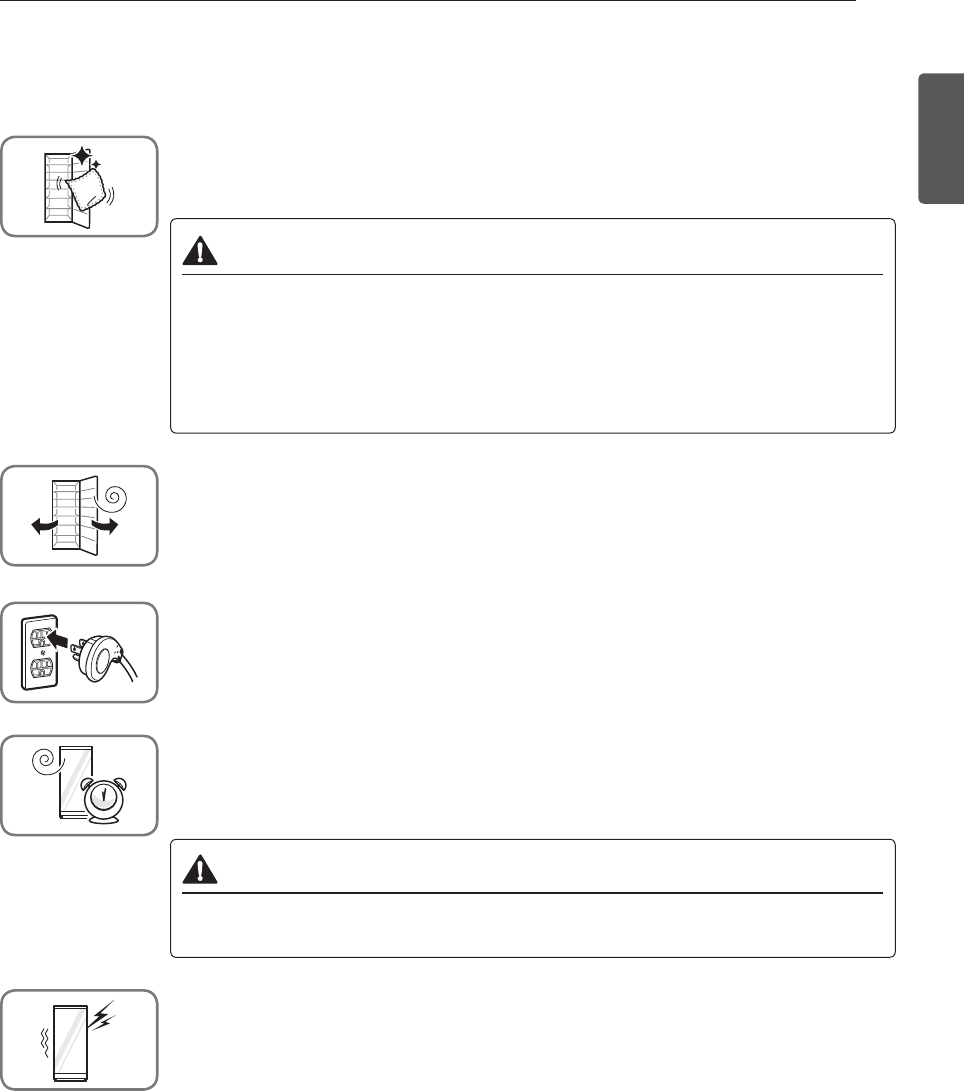
11OPERATION
ENGLISH
OPERATION
Before Use
Clean the refrigerator.
Clean the refrigerator thoroughly and wipe off all dust that accumulated during shipping.
CAUTION
•Do not scratch the refrigerator with a sharp object or use a detergent that contains
alcohol, a ammable liquid or an abrasive when removing any tape or adhesive from
the refrigerator. Remove adhesive residue by wiping it off with your thumb or dish
detergent.
•Do not peel off the model or serial number label or the technical information on the
rear surface of the refrigerator.
Open refrigerator doors and freezer drawers to ventilate the interior.
The inside of the refrigerator may smell like plastic at first. Remove any adhesive tape from
inside the refrigerator and open the refrigerator doors and the freezer drawers for
ventilation.
Connect the power supply.
Check if the power supply is connected before use.
Wait for the refrigerator to cool.
Allow the refrigerator to run for at least two to three hours before putting food in it. Check
the flow of cold air in the freezer compartment to ensure proper cooling.
CAUTION
•Putting food in the refrigerator before it has cooled could cause the food to spoil, or a
bad odor to remain inside the refrigerator.
The refrigerator makes a loud noise after initial operation.
This is normal. The volume will decrease as the temperature decreases.
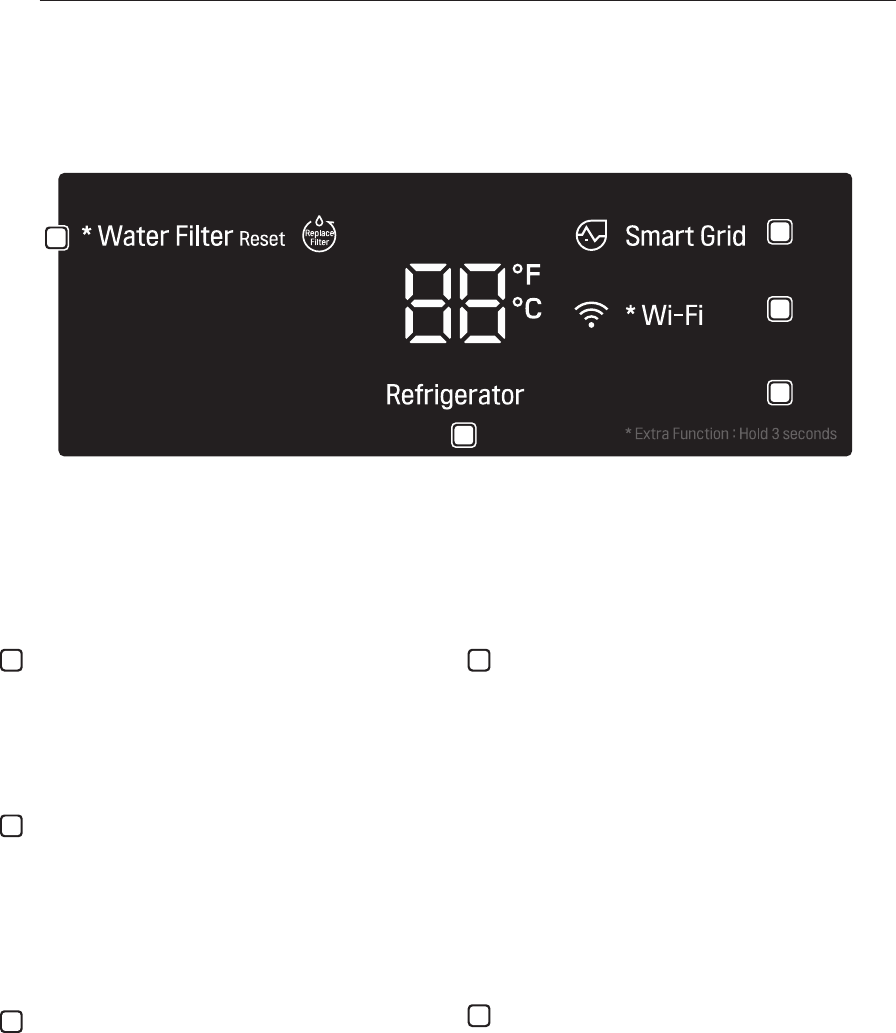
12 PRODUCT OVERVIEW
Control Panel
Depending on the model, some of the following functions may not be available.
Control Panel Features
* POWER
1
2
3
4
5
NOTE
•When the refrigerator is in the Power Saving Mode, the display remains off until a door is opened or a button is
pressed. Once on, the display remains on for 20 seconds.
1
Water Filter
Replace the water filter when the Replace Filter
icon turns on. After replacing the water filter,
press and hold the Water Filter button for three
seconds to turn the icon light off. Replace the
water filter approximately every six months.
2
Freezer Temperature
Indicates the set temperature of the freezer
compartment in Celsius (°C) or Fahrenheit (°F).
The default freezer temperature is 0°F (-18 °C).
Press the Freezer button repeatedly to select a
new set temperature from -6 °F to 8 °F (-21 °C
to -13 °C).
3
Smart Grid (On Some Models)
Press the Smart Grid button to turn the Smart
Grid function On/Off. When the function is on,
the icon illuminates. The Smart Grid function
automatically turns on when the refrigerator is
connected to the Wi-Fi network.
When the refrigerator is responding to a Demand
Response (DR) message from the electric
company, the Grid text illuminates.
4
* Wi-Fi (On Some Models)
The Wi-Fi button, when used with the LG Smart
Refrigerator smart phone app, allows the
refrigerator to connect to a home Wi-Fi network.
Refer to Smart Function for information on the
initial setup of the application.
The Wi-Fi icon shows the status of the
refrigerator’s network connection. The icon
illuminates when the refrigerator is connected to
the Wi-Fi network.
Press and hold the Wi-Fi button for 3 seconds to
connect to the network. The icon blinks while the
connection is being made, then turns on once
the connection is successfully made.
5
* Power
The Power button turns off all electrical power to
the unit.
Press and hold the Power button for 3 seconds
to turn off the power. When the power is off, the
indicator light is off. There is no need to turn off
power at the circuit breaker or wall receptacle.
Use this function for service or extended
vacations.

13PRODUCT OVERVIEW
ENGLISH
2
and
5
SABBATH
Sabbath mode is the function
designated for use of the Refrigerator
during Sabbath.
•To set the Sabbath mode on, Press
and hold the Refrigerator and Power
buttons for 3 seconds. Then Sb shows
in the display.
•Sabbath mode will automatically turned
off after 96 hours.
•To set the Sabbath mode off manually,
press and hold the Refrigerator and
Power buttons for 3 seconds.
• Sabbath mode maintains even when
the electricity recovered from black-
out.
•Lamp and Alarm will automatically
turned off when activated.
•Temperature is set to 37 °F. (Unable to
change temp while Sabbath Mode on)
•Even outage happens when Sabbath
function is on, Sabbath function will still
stay on when power comes back.
CAUTION
Display Mode (For Store Use Only)
•The Display Mode disables all cooling in the
freezer sections to conserve energy while on
display in a retail store. When activated, OF is
displayed on the control panel and the display
remains on for 20 seconds.
To deactivate / activate:
•With either refrigerator door opened, press and
hold the Refrigerator and Water Filter reset
buttons at the same time for ve seconds. The
control panel beeps and the temperature settings
display to conrm that Display Mode is
deactivated. Use the same procedure to activate
Display Mode.
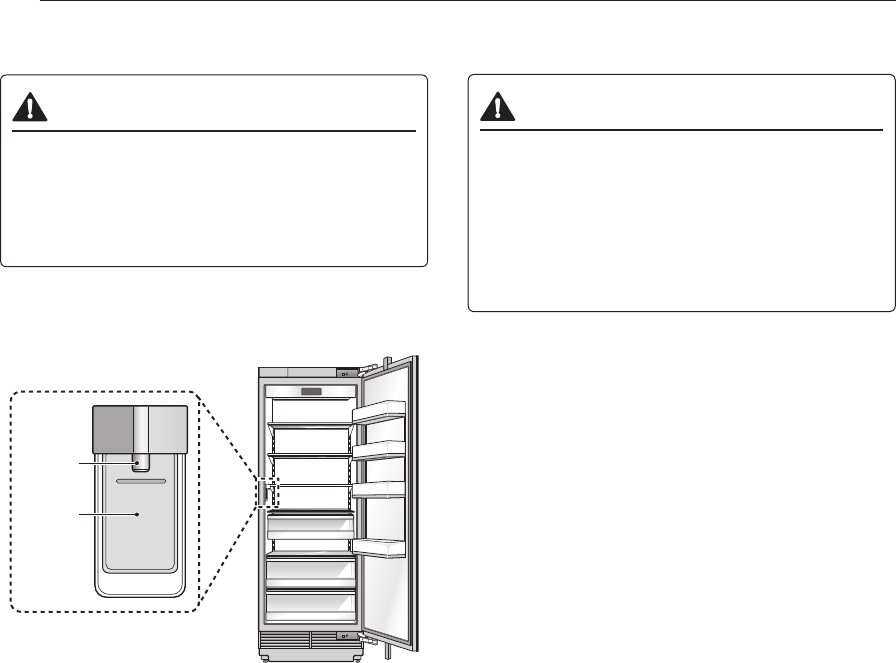
14 PRODUCT OVERVIEW
Internal Water Dispenser
CAUTION
•Keep children away from the dispenser. Children
may play with or damage the controls.
•Dispenses unexpectedly, turn off the water
supply and contact an SIGNATURE KITCHEN
SUITE Customer Information Center.
Dispenser Structure
Water
Nozzle
Water
Paddle
NOTE
•To dispense water, push on the water paddle with a
glass.
•Some dripping may occur after dispensing. Hold the
cup beneath the dispenser for a few seconds after
dispensing to catch all of the drops.
Storing Food
CAUTION
•Do not overll or pack items too tightly into door
bins. Doing so may cause damage to the bin or
personal injury if items are removed with
excessive force.
•Do not store glass containers in the freezer.
Contents may expand when frozen, break the
container and cause injury.
NOTE
•If you are leaving home for a short period, like a
short vacation, the refrigerator should be left on.
Refrigerated foods that are able to be frozen will
stay preserved longer if stored in the freezer.
•If you are leaving the refrigerator turned off for an
extended period, remove all food and unplug the
power cord. Clean the interior, and leave the door
open to prevent fungi from growing in the
refrigerator.
•Do not store food with high moisture content
towards the top of the refrigerator. The moisture
could come in direct contact with the cold air and
freeze.
•Wash food before storing it in the refrigerator.
Vegetables should be washed, and food packaging
should be wiped down to prevent adjacent foods
from being contaminated.
•If the refrigerator is kept in a hot and humid place,
frequent opening of the door or storing a lot of
vegetables in the refrigerator may cause
condensation to form. Wipe off the condensation
with a clean cloth or a paper towel.
•If the refrigerator door or freezer drawer is opened
or closed too often, warm air may penetrate the
refrigerator and raise its temperature. This can
increase the running costs of the unit.
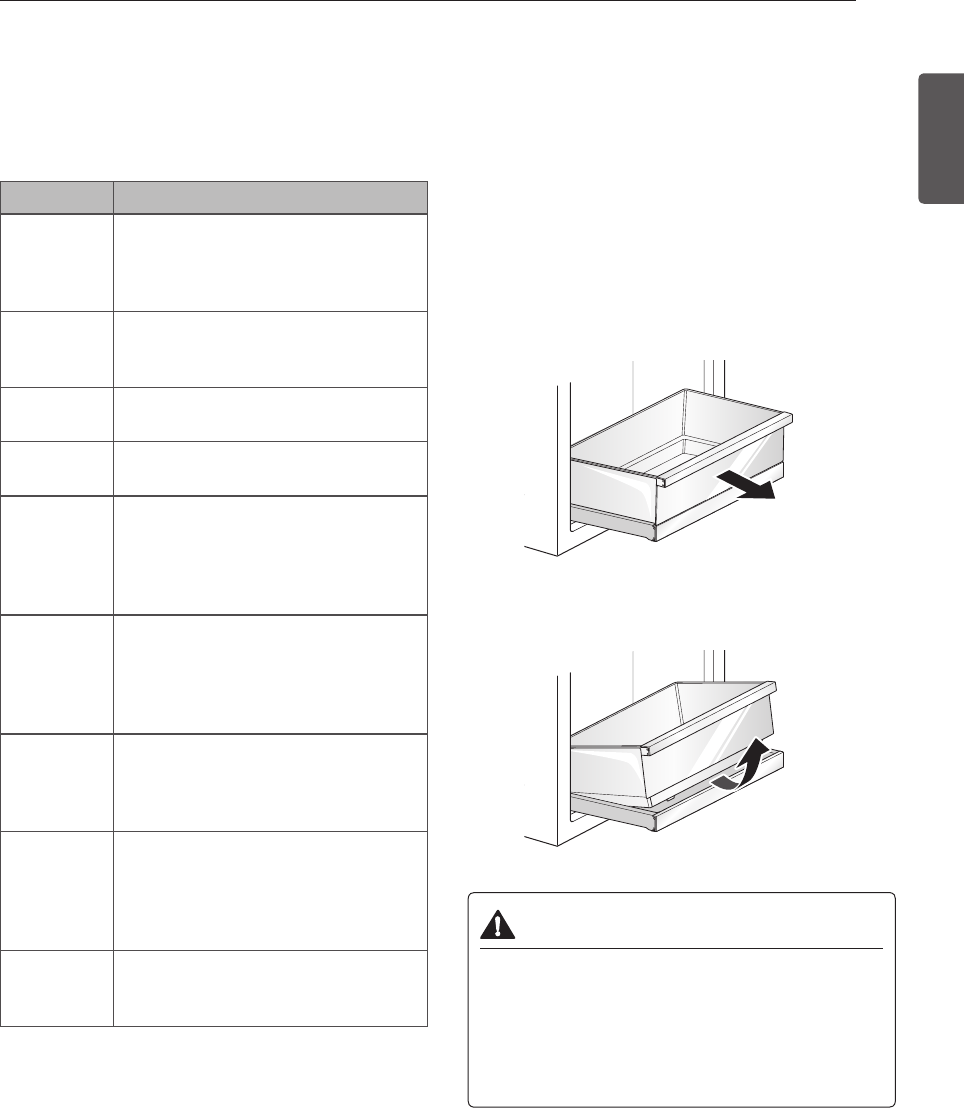
15PRODUCT OVERVIEW
ENGLISH
Food Storage Tips
Wrap or store food in the refrigerator in airtight and
moisture-proof material unless otherwise noted. This
prevents food odor and taste transfer throughout the
refrigerator. For dated products, check date code to
ensure freshness.
Food How to
Butter or
Margarine
Keep opened butter in covered dish
or closed compartment. When storing
an extra supply, wrap in freezer
packaging and freeze.
Cheese
Store in original wrapping until used.
Once opened, rewrap tightly in
plastic wrap or aluminum foil.
Milk Wipe milk cartons. For coldest milk,
place containers on an interior shelf.
Eggs Store in original carton on interior
shelf, not on door shelf.
Fruit
Do not wash or hull fruit until it is
ready to be used. Sort and keep fruit
in original container in a crisper, or
store in completely closed paper bag
on refrigerator shelf.
Leafy
Vegetables
Remove store wrapping, trim or tear
off bruised and discolored areas,
wash in cold water, and drain. Place
in plastic bag or plastic container and
store in crisper.
Vegetables
with skins
(carrots,
peppers)
Place in plastic bags or plastic
container and store in crisper.
Fish
Freeze fresh fish and shellfish if they
are not being eaten the same day
purchased. Eating fresh fish and
shellfish the same day purchased is
recommended.
Leftovers
Cover leftovers with plastic wrap or
aluminum foil, or store in plastic
containers with tight lids.
Drawers
Use the upper compartment to store packaged frozen
foods and frequently-used foods.
Use the lower compartments for larger frozen foods
and items stored for longer periods.
•The sliding drawers allow easy access and
convenience of use.
Removing the Drawers
1Pull the drawer out until it stops. Empty all
contents out of the drawer before removing it.
2Lift the empty drawer slightly to remove it from
the support.
CAUTION
•The drawers are heavy. Always use two hands
when removing or assembling the drawers to
avoid product damage or personal injury. Always
empty drawers before removing them.
•Always open the doors completely before
removing or assembling the drawers.
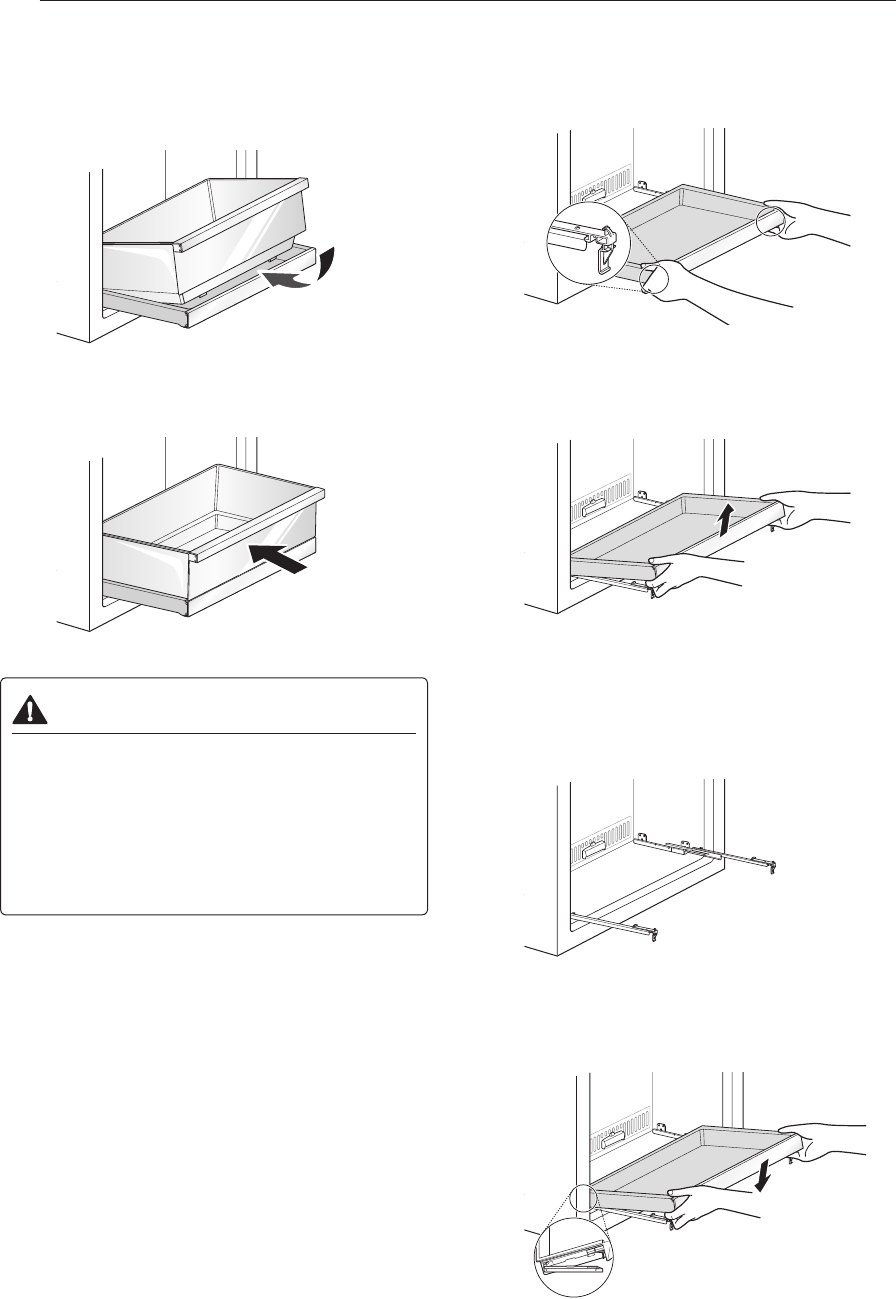
16 PRODUCT OVERVIEW
Assembling the Drawer
1Pull out the drawer support until it stops. Angle
the drawer into the space and set it on the
support.
2Slide the drawer back until it lowers into place on
the support. Close the drawer.
CAUTION
•The drawers are heavy. Always use two hands
when removing or assembling the drawers to
avoid product damage or personal injury. Always
empty drawers before removing or assembling
them.
•Always open the freezer doors completely before
removing or assembling the drawers.
Removing the Drawer Support
1Press the levers on either side of the drawer
support.
2Keeping both levers pressed, lift the drawer
support slightly and remove it from the rail
system.
Assembling the Drawer Support
1Pull both drawer rails out until they stop.
2Line up the bottom edges on the sides of the
drawer support with the groove in each rail and
then lower the support until it clicks into place.
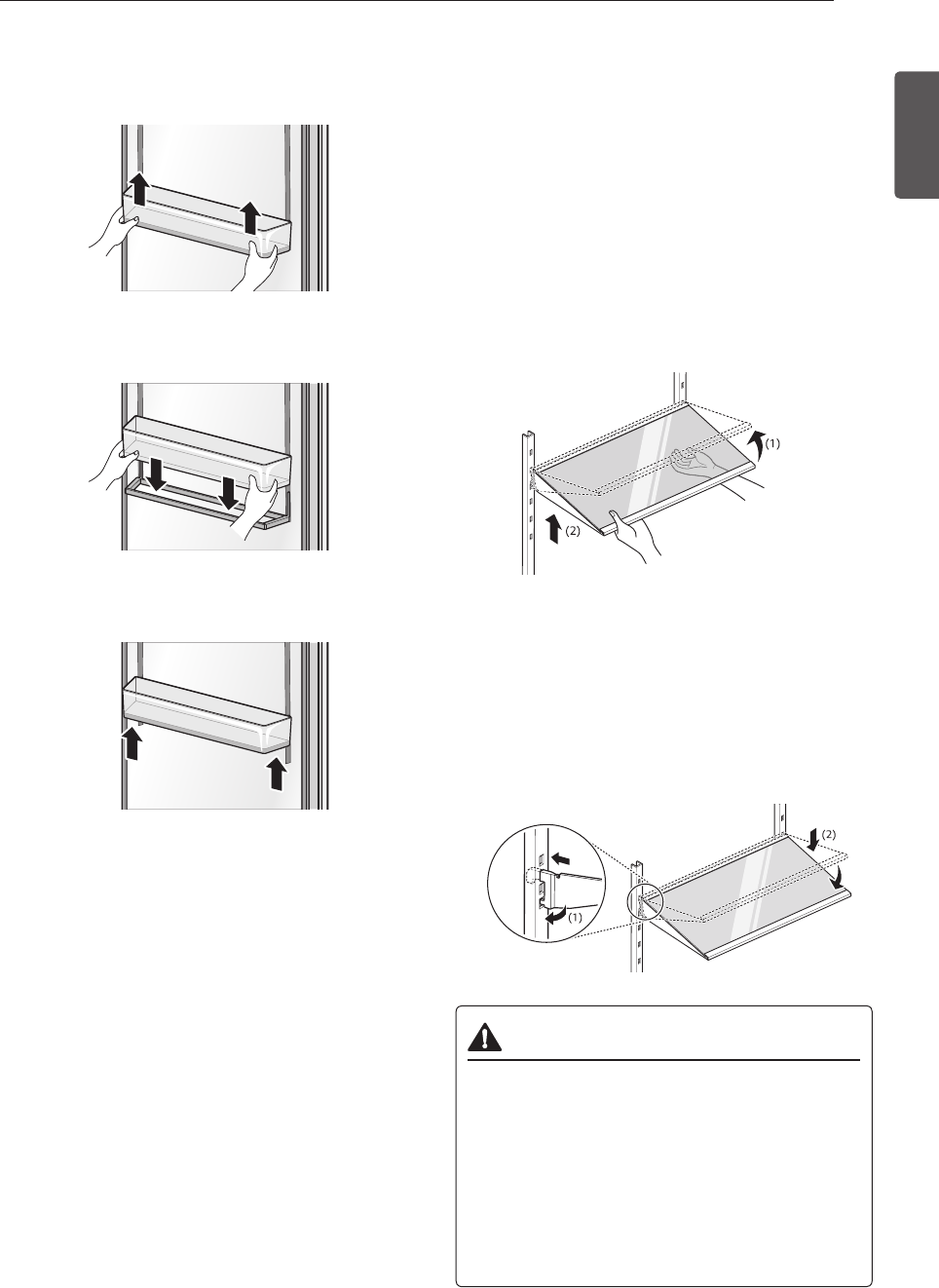
17PRODUCT OVERVIEW
ENGLISH
Door Bins
To remove the door bins, hold the bin with both hands
and lift up to remove it.
To assembly the door bin, align both sides of the bin
with the guides and push the bin down until it snaps
into place.
To adjust the location of bin, tilt the bin up at the front
and sliding it up or down along the door to the
placement you desire.
Adjusting the Shelves
The shelves in the refrigerator are adjustable to meet
individual storage needs. Your model may have full or
split shelves.
Adjusting the shelves to fit items of different heights
will make finding the exact item you want easier.
Detaching the Shelf
1Tilt up the front of the shelf and then lift the shelf
straight up.
2Pull the shelf out.
Assembling the Shelf
1Tilt the front of the shelf up and guide the shelf
hooks into the slots at a desired height.
2Lower the front of the shelf so that the hooks
drop into the slots.
CAUTION
•Make sure that shelves are level from one side
to the other. Failure to do so may result in the
shelf falling or spilled food.
•Do not clean glass shelves with warm water
while they are cold. Shelves may break if
exposed to sudden temperature changes or
impact.
•Glass shelves are heavy. Use special care when
removing them.
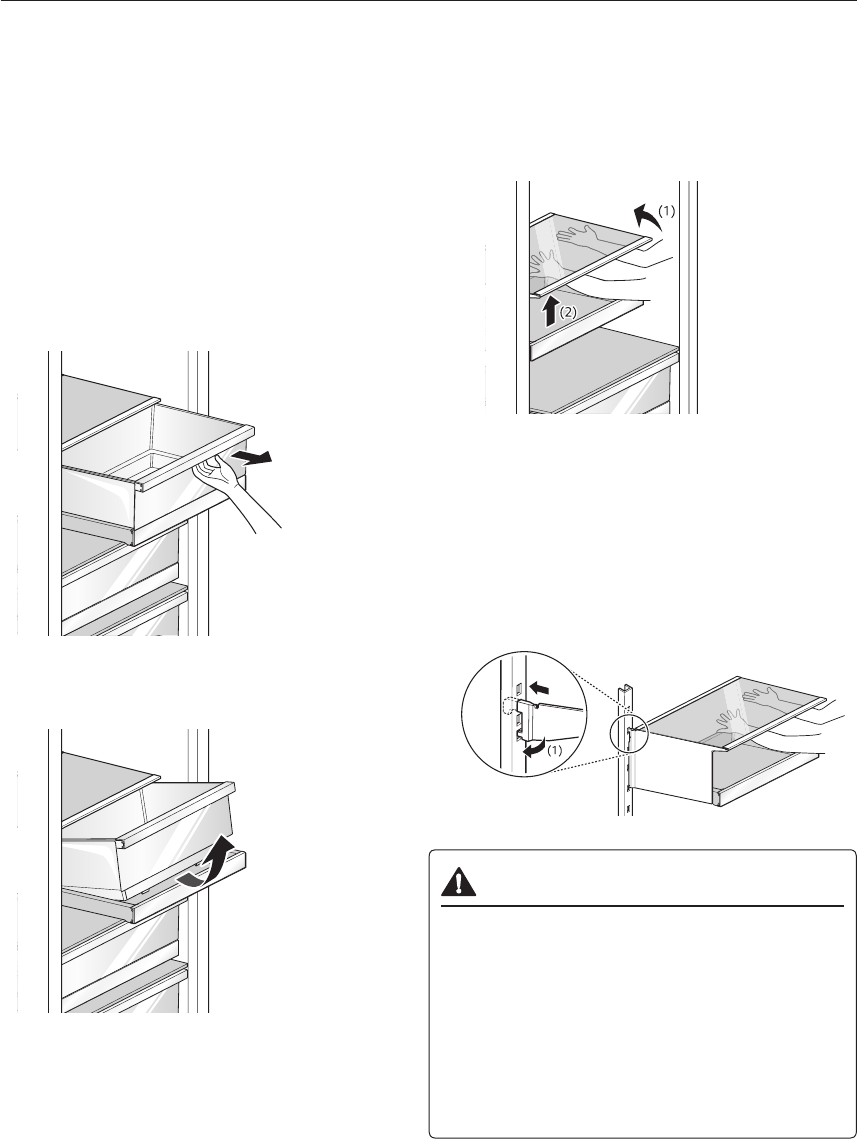
18 PRODUCT OVERVIEW
Adjusting the Snack Pan
The Snack Pan in the refrigerator are adjustable to
meet individual storage needs. Your model may have
full or split shelves.
Adjusting the Snack Pan to fit items of different
heights will make finding the exact item you want
easier.
Removing the Drawer
1Pull the drawer out until it stops. Empty all
contents out of the drawer before removing it.
2Lift the empty drawer slightly to remove it from
the support.
Detaching the Snack Pan
1Tilt up the front of the shelf and then lift the Snack
Pan straight up.
2Pull the Snack Pan out.
Assembling the Snack Pan
1Tilt the front of the Snack Pan up and guide the
shelf hooks into the slots at a desired height.
2Lower the front of the Snack Pan so that the
hooks drop into the slots.
CAUTION
•Make sure that Snack Pan is level from one side
to the other. Failure to do so may result in the
Snack Pan falling or spilled food.
•Do not clean glass Snack Pan with warm water
while they are cold. Snack Pan may break if
exposed to sudden temperature changes or
impact.
•Snack Pan is heavy. Use special care when
removing it.
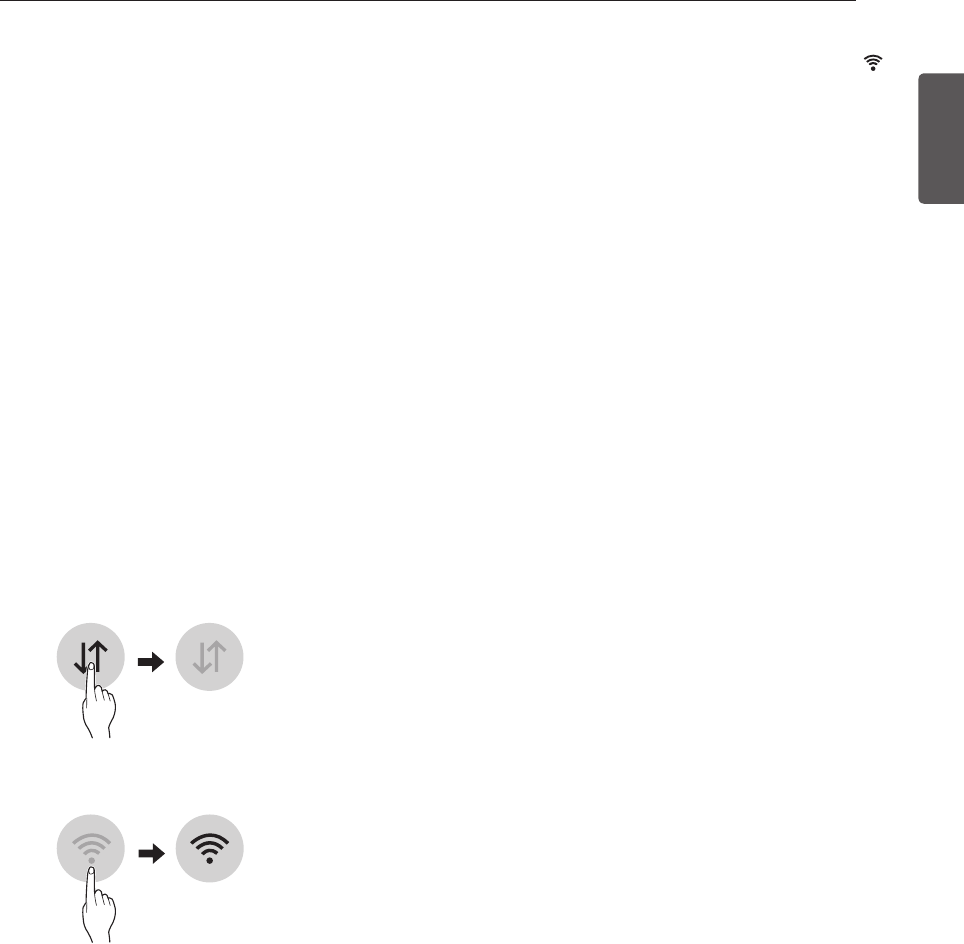
19SMART FUNCTIONS
ENGLISH
SMART FUNCTIONS
SIGNATURE KITCHEN SUITE
Application
The SIGNATURE KITCHEN SUITE application allows
you to communicate with the appliance using a
smartphone.
Things to Check before SIGNATURE
KITCHEN SUITE Application
1Check the distance between the appliance and
the wireless router (Wi-Fi network).
•If the distance between the appliance and the
wireless router is too far, the signal strength
becomes weak. It may take a long time to
register or installation may fail.
2Turn off the Mobile data or Cellular Data on
your smartphone.
•For iPhones, turn data off by going to Settings
→ Cellular → Cellular Data.
3Connect your smartphone to the wireless router.
NOTE
•To verify the Wi-Fi connection, check that Wi-Fi
icon on the control panel is lit.
•The appliance supports 2.4 GHz Wi-Fi networks
only. To check your network frequency, contact your
Internet service provider or refer to your wireless
router manual.
•SIGNATURE KITCHEN SUITE application is not
responsible for any network connection problems or
any faults, malfunctions, or errors caused by
network connection.
•The surrounding wireless environment can make
the wireless network service run slowly.
•If the appliance is having trouble connecting to the
Wi-Fi network, it may be too far from the router.
Purchase a Wi-Fi repeater (range extender) to
improve the Wi-Fi signal strength.
•The network connection may not work properly
depending on the Internet service provider.
•The Wi-Fi connection may not connect or may be
interrupted because of the home network
environment.
•The appliance cannot be registered due to problems
with the wireless signal transmission. Unplug the
appliance and wait about a minute before trying
again.
•If the rewall on your wireless router is enabled,
disable the rewall or add an exception to it.
•The wireless network name (SSID) should be a
combination of English letters and numbers. (Do not
use special characters.)
•Smartphone user interface (UI) may vary depending
on the mobile operating system (OS) and the
manufacturer.
•If the security protocol of the router is set to WEP,
you may fail to set up the network. Please change it
to other security protocols (WPA2 is recommended)
and register the product again.

20 SMART FUNCTIONS
Installing SIGNATURE KITCHEN
SUITE Application
Search for the SIGNATURE KITCHEN SUITE
application from the Google Play Store or Apple App
Store on a smart phone. Follow instructions to
download and install the application.
NOTE
•If you choose the simple login to access the
SIGNATURE KITCHEN SUITE application, you
must go through the appliance registration process
each time you change your smartphone or reinstall
the application.
SIGNATURE KITCHEN SUITE
Application Features
Manage Food
This feature helps track items in the refrigerator and
freezer, sends alerts when items are near their use by
dates, generates grocery lists, and links to related
recipes.
Energy Monitoring
This feature keeps track of the refrigerator’s power
consumption and the number of door openings.
Remote Control
Control the Refrigerator Temperature, Fresh Air Filter
and Ice Plus from the smart phone app.
Push Messages
If the door remains open for more than ten minutes,
you will receive a push message. When Ice Plus is
finished, you will receive a push message.
Smart Diagnosis™
This function provides useful information for
diagnosing and solving issues with the appliance
based on the pattern of use.
Settings
Allows you to set various options on the refrigerator
and in the application.
NOTE
•If you change your wireless router, your Internet
service provider or your password after registering
the appliance, please delete it from the
SIGNATURE KITCHEN SUITE application Settings
→ Edit Product and register again.
•This information is current at the time of publication.
The application is subject to change for product
improvement purposes without notice to users.

21SMART FUNCTIONS
ENGLISH
Smart Grid Function
When the refrigerator operates in Smart Grid mode,
the Smart Refrigerator function can control energy
usage or delay the operation of some functions to
save energy during peak usage periods.
•You can override the Smart Grid function any time
(using the Smart Grid button or application).
•To use the Smart Grid function, you need to register
your appliance with your electric utility company.
Smart Grid Application Features
Smart Saving_Demand Response
You can lower energy usage based on Demand
Response (DR) signals from the utility company. If the
refrigerator is operating in Smart Saving mode
according to the DR signal, you can see a pop up.
Seasonal Energy Savings
Lower energy usage based on time period.
Using the Smart Grid Function
This feature responds to notification events from your
utility company to run high energy consuming tasks
during off-peak periods when demand is lower. These
notification events are known as Demand Response
signals.
If the refrigerator receives a Demand Response
signal from the utility company, the refrigerator will
turn on the Grid LED on the refrigerator display and
control its power consumption according to the signal.
The refrigerator will respond to the signals received
from the utility company as long as product
performance is maintained.
If the refrigerator receives a Demand Response
signal, the refrigerator will operate in Delay Appliance
Load (DAL) or Temporary Appliance Load Reduction
(TALR) mode.
Delay Appliance Load (DAL)
The refrigerator responds to a DAL signal by providing
a moderate load reduction for the duration of the
delay period.
This mode controls functions that consume a lot of
energy such as adjusting the cooling system, running
the defrost cycle, and making ice.
•When the refrigerator operates in DAL mode, the
Grid LED is illuminated on the refrigerator display.
•DAL mode is automatically deactivated after the
period stipulated by the DAL signal (max. 4 hours)
or when you override the Smart Grid function.
Temporary Appliance Load Reduction (TALR)
The refrigerator responds to a TALR signal by
aggressively reducing the load for a short time period,
typically 10 minutes. This mode reduces energy
consumption by stopping the compressor and
controlling the functions that consume a lot of energy
such as the defrost cycle and fan.
•When the refrigerator operates in TALR mode, the
Grid LED is illuminated on the refrigerator display.
•TALR mode is automatically deactivated after the
received duration (max. 10 minutes), or when you
override the Smart Grid function. The mode is
immediately deactivated and the refrigerator returns
to its normal state when the door is opened or
closed, or the dispenser is used.
Override Smart Grid Mode
To ignore the Demand Response signal from the
utility company and override the Smart Grid function,
push the Smart Grid button while the refrigerator is in
Smart Grid mode.
When you override the Smart Grid function, the
refrigerator ignores the Demand Response signal and
is no longer controlled by the utility company until the
next Demand Response signal is sent. You can also
override the Smart Grid function using the smart
phone app.
SIGNATURE KITCHEN SUITE Open API
You can manage Smart Grid features for the
SIGNATURE KITCHEN SUITE Refriferator.
Please check the detailed specifications on the notice
page on www.thesignaturekitchen.com.
API list
Demand Response
•Send demand response signal
Power Saving
•Set saving mode
•Get schedule of DR/Delay Defrost
Energy Monitoring
•Get door open event
•Get energy consumption
Delay Defrost Capability
•Insert a delay defrost schedule event
•Update a delay defrost schedule event
•Delete a delay defrost schedule event
•Get the delay defrost schedule
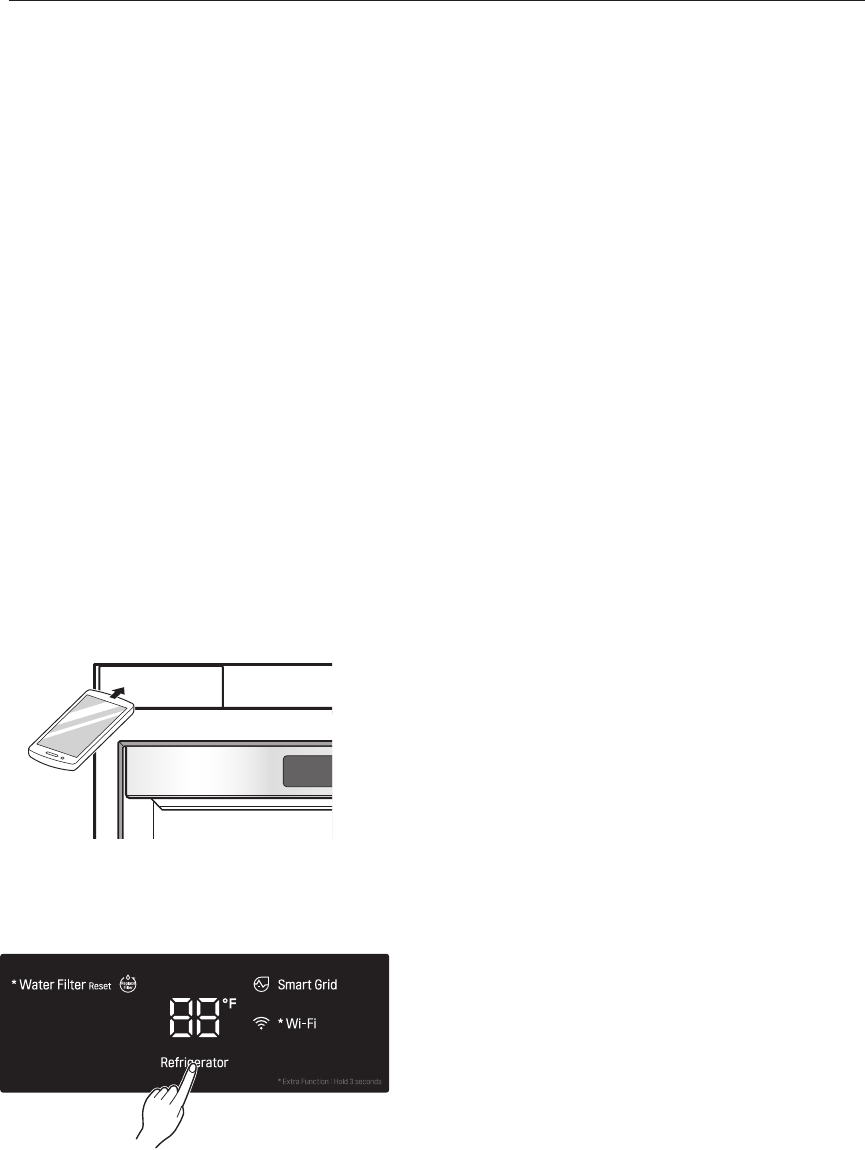
22 SMART FUNCTIONS
Smart Diagnosis™ Function
Should you experience any problems with the
appliance, it has the capability of transmitting data via
your telephone to the SIGNATURE KITCHEN SUITE
Information Center. NFC or Wi-Fi equipped models
can also transmit data to a smartphone using the
SIGNATURE KITCHEN SUITE application.
Smart Diagnosis™ through the
Customer Information Center
This method allows you to speak directly to our
trained specialists. The specialist records the data
transmitted from the appliance and uses it to analyze
the issue, providing a fast and effective diagnosis.
1Call the SIGNATURE KITCHEN SUITE Customer
Information Center at:
(U.S.A) 1-855-790-6655
2Open the refrigerator door.
3Hold the mouthpiece of your phone in front of the
speaker that is located on the filter cover of the
refrigerator, when instructed to do so by the call
center.
4Press and hold the Freezer button for three
seconds while continuing to hold your phone to
the speaker.
* POWER
5After you hear three beeps, release the Freezer
button.
6Keep the phone in place until the tone
transmission has finished. The display will count
down the time. Once the countdown is over and
the tones have stopped, resume your
conversation with the specialist, who will then be
able to assist you in using the information
transmitted for analysis.
NOTE
•For best results, do not move the phone while the
tones are being transmitted.
•If the call center agent is not able to get an accurate
recording of the data, you may be asked to try
again.
•The Smart Diagnosis™ function depends on the
local call quality.
•Bad call quality may result in poor data transmission
from your phone to the call center, which could
cause Smart Diagnosis™ to malfunction.
Smart Diagnosis™
Use the Smart Diagnosis feature in the SIGNATURE
KITCHEN SUITE application for help diagnosing
issues with the appliance without the assistance of
the SIGNATURE KITCHEN SUITE Customer
Information Center.
Follow the instructions in the SIGNATURE KITCHEN
SUITE application to perform a Smart Diagnosis
using your smartphone.
NOTE
•Smart Diagnosis™ cannot be activated unless the
appliance can be turned on using the Power button.
If the appliance cannot be turned on,
troubleshooting must be done without using Smart
Diagnosis™.

23SMART FUNCTIONS
ENGLISH
FCC Notice
The following notice covers the transmitter module
contained in this product.
This equipment has been tested and found to comply
with the limits for a Class B digital device, pursuant to
Part 15 of the FCC Rules and also Part 18 of the FCC
Rules. These limits are designed to provide
reasonable protection against harmful interference in
a residential installation. This equipment generates,
uses, and can radiate radio frequency energy and, if
not installed and used in accordance with the
instructions, may cause harmful interference to radio
communications. However, there is no guarantee that
interference will not occur in a particular installation. If
this equipment does cause harmful interference to
radio or television reception, which can be determined
by turning the equipment off and on, the user is
encouraged to try to correct the interference by one
or more of the following measures:
−Reorient or relocate the receiving antenna.
−Increase the separation between the equipment
and the receiver.
−Connect the equipment to an outlet on a circuit
different from that to which the receiver is
connected.
−Consult the dealer or an experienced radio/TV
technician for help.
This device complies with Part 15, Part 18 of the FCC
Rules. Operation is subject to the following two
conditions:
1) this device may not cause harmful interference and
2) this device must accept any interference received,
including interference that may cause undesired
operation of the device.
Any changes or modications in construction of this
device which are not expressly approved by the party
responsible for compliance could void the user’s
authority to operate the equipment.
FCC RF Radiation Exposure
Statement
This equipment complies with FCC radiation exposure
limits set forth for an uncontrolled environment. This
transmitter must not be co-located or operating in
conjunction with any other antenna or transmitter.
This equipment should be installed and operated with
a minimum distance of 20 cm (7.8 inches) between
the antenna and your body. Users must follow the
specific operating instructions for satisfying RF
exposure compliance.
Industry Canada Statement (For
transmitter module contained in this
product)
This device complies with Industry Canada’s
applicable licence- exempt RSSs. Operation is
subject to the following two conditions:
1) This device may not cause interference; and
2) This device must accept any interference, including
interference that may cause undesired operation of
the device.
Industry Canada ICES-001 Compliance Label: CAN
ICES-1/NMB-1
IC Radiation Exposure Statement
This equipment complies with IC radiation exposure
limits set forth for an uncontrolled environment.
This equipment should be installed and operated with
a minimum distance of 20 cm (7.8 inches) between
the antenna and your body.
NOTE
•The manufacturer is not responsible for any radio or
TV interference caused by unauthorized
modications to this equipment. Such modications
could void the user's authority to operate the
equipment.
Wireless LAN module Specifications
Model LCW-003
Frequency Range 2412 MHz - 2462 MHz
Output Power
(Max)
IEEE 802.11b: 17.56 dBm
IEEE 802.11g: 25.53 dBm
IEEE 802.11n: 25.29 dBm
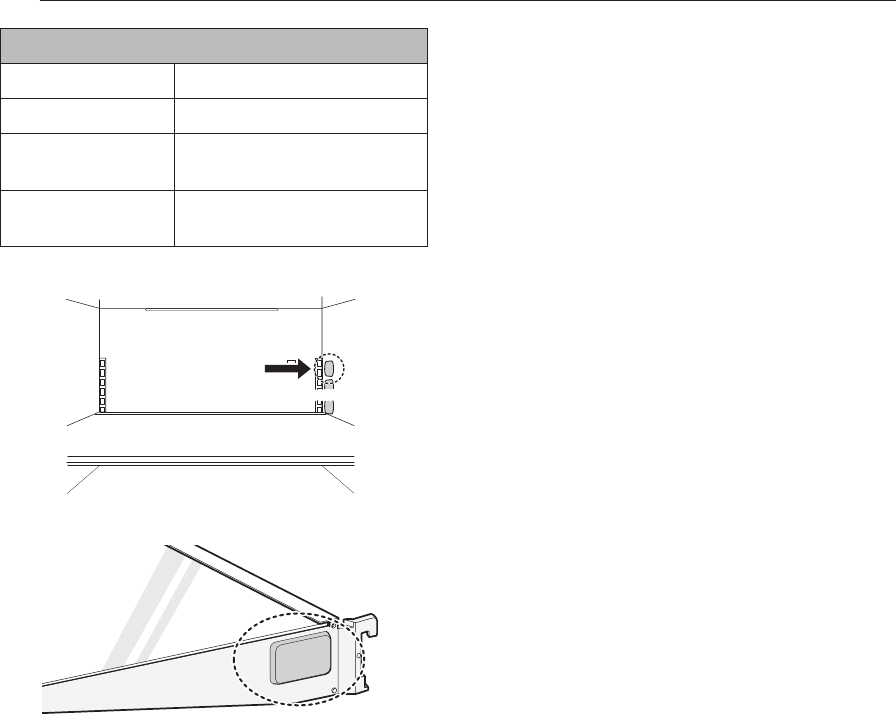
24 SMART FUNCTIONS
Wireless Power Transfer Specifications
Frequency 330 kHz ~ 370 kHz
Rated voltage DC 12 V
Transmission
power
Less than and equal to 3 W
per shelf
Transmission
mode
Electromagnetic induction
Transmitter
Receiver
NOTE
•Foreign objects and dirt between the right side of
shelf and the inner cabinet wall could prevent the
shelf light from turning on.
•The shelf light turns on when the door is opened.
•The shelf light turns off after seven minutes or when
the door is closed.
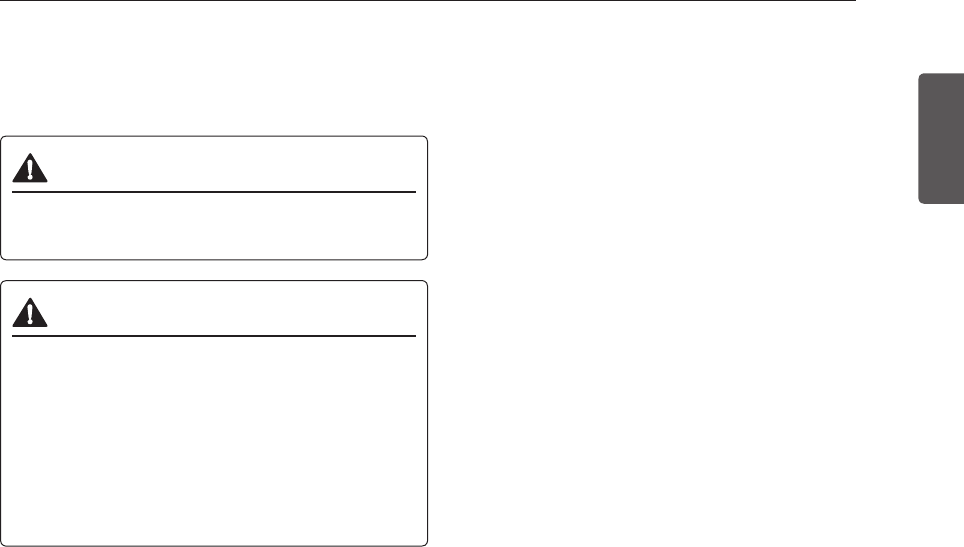
25MAINTENANCE
ENGLISH
MAINTENANCE
Cleaning
WARNING
•Use non-ammable cleaner. Failure to do so can
result in re, explosion, or death.
CAUTION
•Do not use an abrasive cloth or sponge when
cleaning the interior and exterior of the
refrigerator.
•Do not place your hand on the bottom surface of
the refrigerator when opening and closing the
doors.
•When lifting the hinge free of the latch, be careful
that the door does not fall forward.
General Cleaning Tips
•Both the refrigerator and freezer sections defrost
automatically; however, clean both sections once a
month to prevent odors.
•Wipe up spills immediately.
•Unplug the refrigerator or disconnect power before
cleaning.
•Remove all removable parts, such as shelves.
•Use a clean sponge or soft cloth and a mild
detergent in warm water. Do not use abrasive or
harsh cleaners.
•Hand wash, rinse and dry all surfaces thoroughly.
•When cleaning the inside or outside of the
appliance, do not wipe it with a rough brush,
toothpaste, or ammable materials. Do not use
cleaning agents containing ammable substances.
−This may cause discoloration or damage to the
appliance.
−Flammable substances: alcohol (ethanol,
methanol, isopropyl alcohol, isobutyl alcohol,
etc.), thinner, bleach, benzene, ammable liquid,
abrasive, etc.
Inside Walls
•Allow freezer to warm up so the cloth will not stick.
To help remove odors, wash the inside of the
refrigerator with a mixture of baking soda and warm
water. Mix 2 tablespoons of baking soda to 1 quart of
water (26 g soda to 1 liter water.) Be sure the baking
soda is completely dissolved so it does not scratch
the surfaces of the refrigerator.
Door Liners and Gaskets
Use a clean sponge or soft cloth and a mild detergent
in warm water. Do not use cleaning waxes,
concentrated etergents, bleaches, or cleaners
containing petroleum on plastic refrigerator parts.
Plastic Parts (covers and panels)
Use a clean sponge or soft cloth and a mild detergent
in warm water. Do not use glass cleaners, abrasive
cleansers, or flammable fluids. These can scratch or
damage the material.
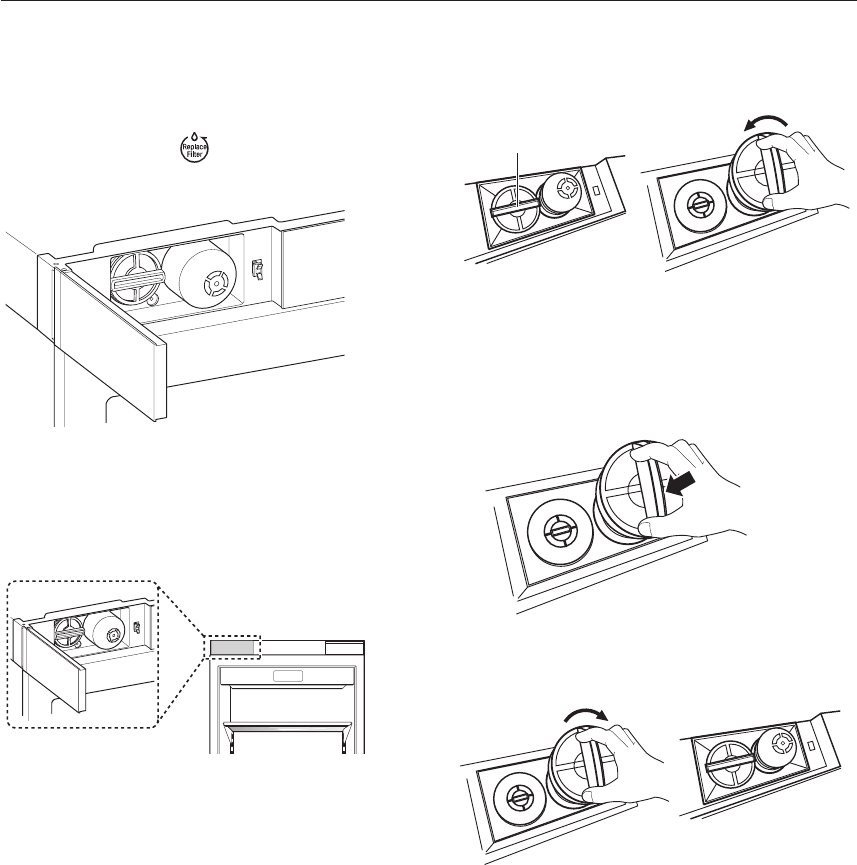
26 MAINTENANCE
Replacing the Water Filter
Replace the Water Filter :
•Approximately every six months.
•When the Replace Filter icon turns on.
•When the water dispenser output decreases.
1Remove the old water filter.
Push and open up the Water Filter cover on ther
right top of freezer.
NOTE
•Replacing the water lter causes a small amount of
water (around 1 oz. or 25 cc) to drain.
•Wrap a cloth around the front end of the water lter
cover to collect any leaking water. Hold the water
lter upright, once it is removed, to prevent any
remaining water from spilling out of the water lter.
2Put the cap on water filter, then grasp and rotate
it counterclockwise to remove the water filter from
the filter head.
Cap
3Replace with a new water filter.
Take the new water filter out of its packing and
remove the protective cover from the o-rings. Put
the cap on new water filter, then push it into the
manifold hole until it stops.
4Grasp and rotate cap clockwise until it stops.
Put the cap on the right side of Water Filter.
5After the water filter is replaced, dispense 2.5
gallons of water (flush for approximately 5
minutes) to remove trapped air and contaminants
from the system.
NOTE
•Do not dispense the entire 2.5 gallon amount
continuously. Press and release the dispenser pad
for cycles of 30 seconds ON and 60 seconds OFF.
•Keep the water lter bypass plug. You MUST use
the water lter bypass plug when a replacement
water lter cartridge is not available.
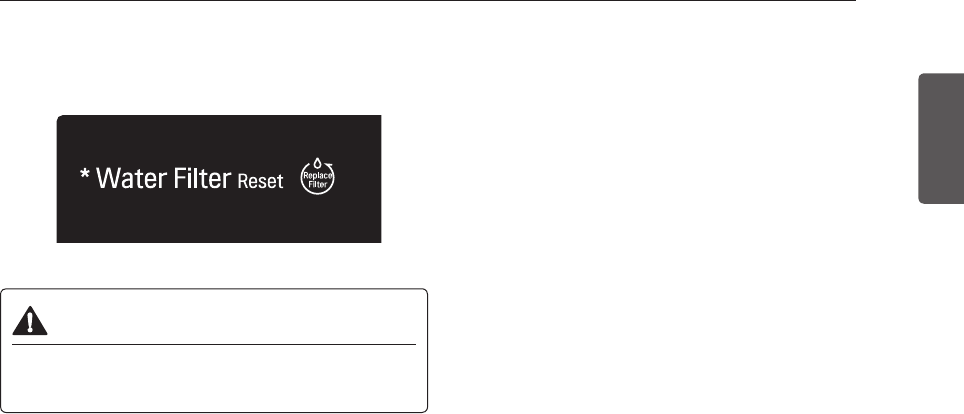
27MAINTENANCE
ENGLISH
6After changing the filter, press and hold the Water
Filter Reset button for three seconds to reset the
indicator light.
* POWER
CAUTION
•DO NOT operate the refrigerator without a water
lter or water lter bypass plug installed.
NOTE
To purchase a replacement water filter:
•Visit your local dealer or distributor
•Web : Find Parts & Accessories from Support
section of thesignaturekitchen.com
•Call : 1-855-790-6655 (USA)
•Use replacement cartridge :
For further assistance, call:
1-855-790-6655 (USA)
•Use replacement cartridge:
LT1000P (ADQ74793501)
LT1000PC (ADQ74793504)
LT1000PCS (ADQ74793505)
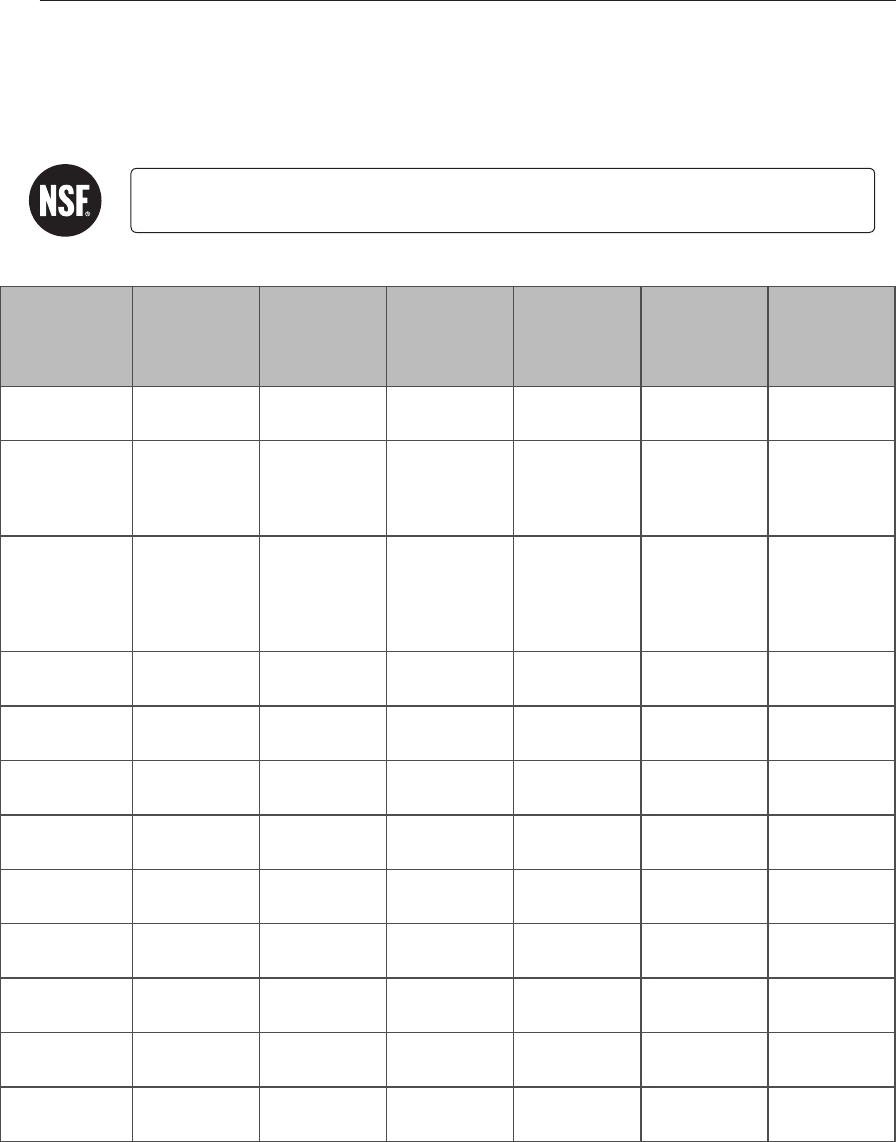
28 MAINTENANCE
Performance Data Sheet
Model: LT1000P/PC/PCS NSF System Trade Name Code : MDJ64844601
The concentration of the indicated substances in water entering the system was reduced to a concentration less
than or equal to the permissible limit for water leaving the system as specified in NSF/ANSI Standard 42 and
Standard 53.
System tested and certified by NSF International against NSF/ANSI Standard 42 and
Standard 53 for the reduction of substances listed below.
substance
Reduction
Average
Influent
Challenge
NSF specified
Challenge
Concentration
Avg %
Reduction
Average
Product Water
Concentration
Max
Permissible
Product Water
Concentration
NSF
Reduction
Requirements
Chlorine Taste
and Odor 2.0 μg/L 2.0 μg/L± 10% >97.5% 0.050 μg/L N/A ≥ 50.00%
Nominal
Particulate
Class I, , ≥ 0.5
to < 1.0 μm
12,000,000
pts/mL
At least
10,000
particles/mL
99.80% 24,000 pts/ml N/A ≥ 85.00%
Asbestos 180 MFL
107 to 108
MFL; fibers
greater than
10 μg/Lin
length
>99.00% < 1 MFL N/A ≥ 99.00%
Atrazine 8.5 μg/L 9.0 μg/L ±
10% >94.10% 0.500 μg/L 3.0 μg/L NA
Benzene 15.0 μg/L 15.0 μg/L ±
10% >96.60% 0.510 μg/L 5.0 μg/L NA
Carbofuran 74.0 μg/L 80.0 μg/L ±
10% 98.30% 1.258 μg/L 40 μg/L NA
Lindane 1.9 μg/L 2.0 μg/L ±
10% >99.00% 0.019 μg/L 0.2 μg/L NA
P-Dichlorobenzene
230.0 μg/L 225.0 μg/L ±
10% >99.80% 0.460 μg/L 75.0 μg/L NA
2,4-D 210.0 μg/L 210.0 μg/L ±
10% >99.90% 0.210 μg/L 70.0 μg/L NA
Lead pH @6.5 140.0 μg/L 150.0 μg/L ±
10% 99.60% 0.560 μg/L 10.0 μg/L NA
Lead pH @8.5 150.0 μg/L 150.0 μg/L ±
10% >99.70% <0.500 μg/L 10.0 μg/L NA
Mercury @ pH
6.5 5.9 μg/L 6.0 μg/L ±
10% 91.00% 0.531 μg/L 2.0 μg/L NA
(Continued on next page)
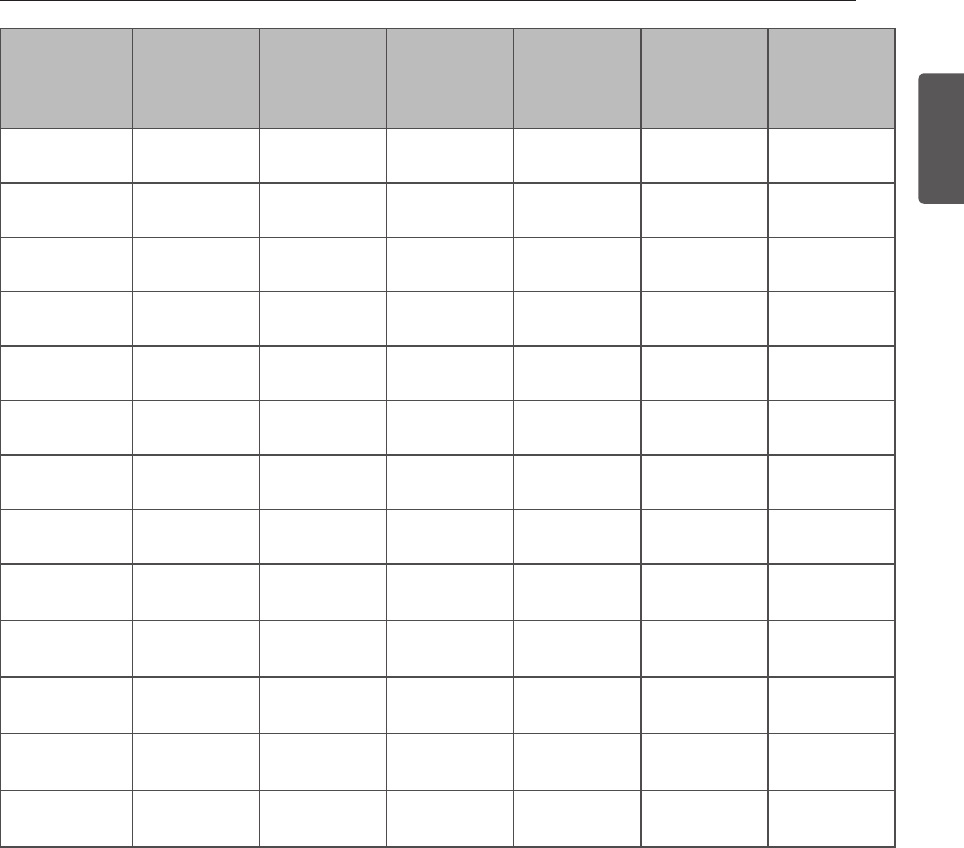
29MAINTENANCE
ENGLISH
substance
Reduction
Average
Influent
Challenge
NSF specified
Challenge
Concentration
Avg %
Reduction
Average
Product Water
Concentration
Max
Permissible
Product Water
Concentration
NSF
Reduction
Requirements
Mercury @ pH
8.5 5.6 μg/L 6.0 μg/L ±
10% 92.5% 0.420 μg/L 2.0 μg/L NA
Cyst* 100,000
cysts/L
Minimum
50,000 cysts/L >99.99% 10 cysts/L N/A ≥ 99.95%
Atenolol 240 ng/L 200 ± 40%
ng/L > 95.50% 10.80 ng/L 30 ng/L NA
Carbamazepine
1600 ng/L 1400 ± 40%
ng/L 98.40% 25.60 ng/L 200 ng/L NA
DEET 1600 ng/L 1400 ± 40%
ng/L 97.10% 46.40 ng/L 200 ng/L NA
Trimethoprim 170 ng/L 140 ± 40%
ng/L >96.80% 5.44 ng/L 20 ng/L NA
Linuron 160 ng/L 140 ± 40%
ng/L >96.60% 5.44 ng/L 20 ng/L NA
Phenytoin 200 ng/L 200 ± 40%
ng/L >94.80% 10.40 ng/L 30 ng/L NA
Ibuprofen 400 ng/L 400 ± 40%
ng/L >94.50% 22.00 ng/L 60 ng/L NA
Naproxen 140 ng/L 140 ± 40%
ng/L >96.10% 5.46 ng/L 20 ng/L NA
Estrone 120 ng/L 140 ± 40%
ng/L >96.10% 4.68 ng/L 20 ng/L NA
Bisphenol A 2000 ng/L 2000 ± 40%
ng/L >98.90% 22.00 ng/L 300 ng/L NA
Nonyl Phenol 1600 ng/L 1400 ± 40%
ng/L >97.10% 46.40 ng/L 200 ng/L NA
•Based on the use of Cryptosporidium parvum oocysts.
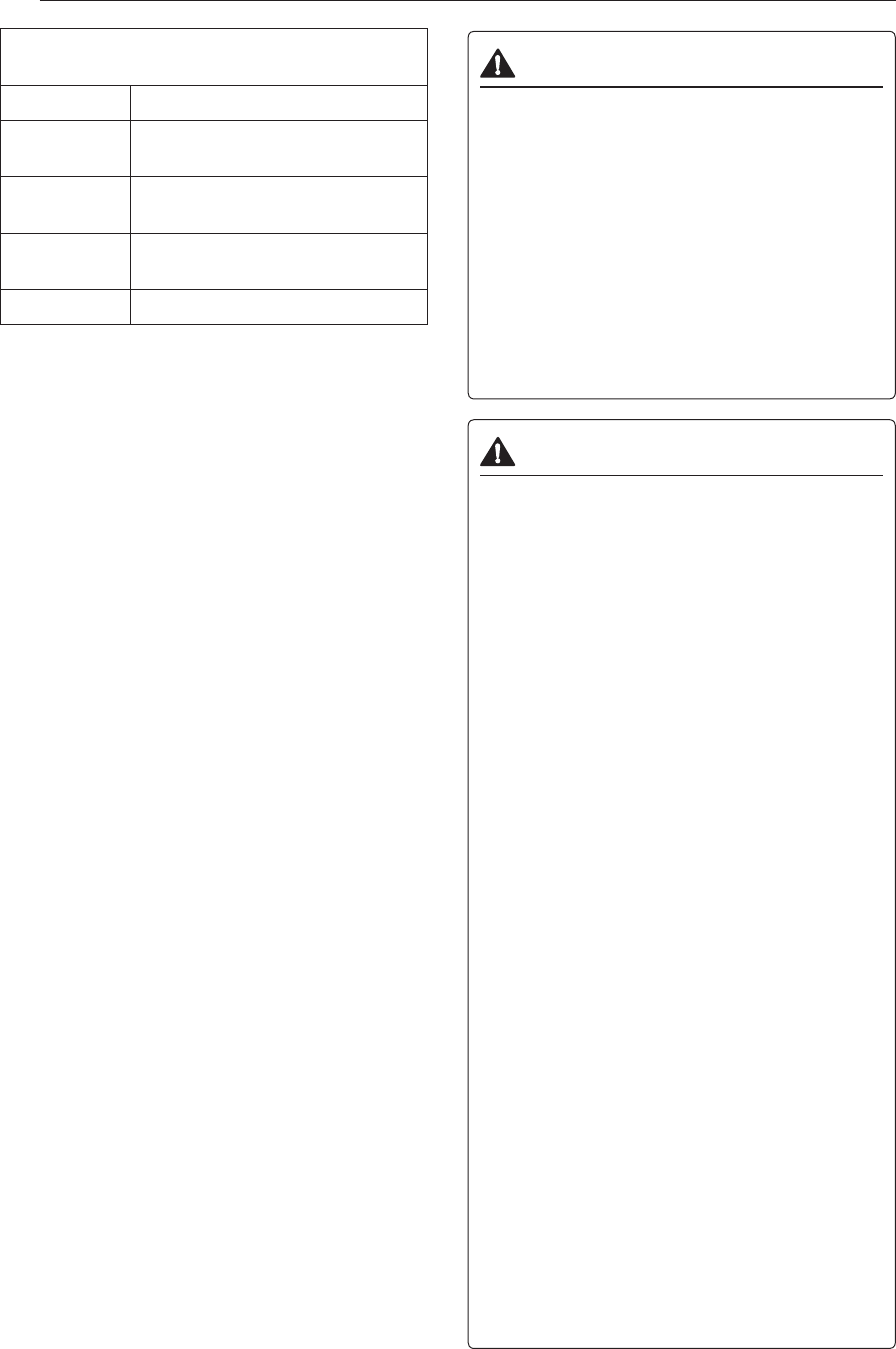
30 MAINTENANCE
Application Guidelines/Water Supply
Parameters
Service Flow 0.5 gpm (1.9 lpm)
Water Supply Community or Private Well -
Potable Water
Water
Pressure 20 – 120 psi (138 – 827 kPa)
Water
Temperature 33 °F – 100 °F (0.6 °C – 37.8 °C)
Capacity 200 gallons (757 liters)
It is essential that the manufacturer’s recommended
installation, maintenance and filter replacement
requirements be carried out for the product to perform
as advertised.
NOTE
•While the testing was performed under standard
laboratory conditions, actual performance may vary.
Replacement Cartridge:
LT1000P (ADQ74793501)
LT1000PC (ADQ74793504)
LT1000PCS (ADQ74793505)
For replacement filters, visit your local dealer or
distributor or search under “water filters” on the
lg.com website.
For further assistance, the LG Electronics Customer
Information Center is open 24 hours a day/7 days a
week.
USA: 1-800-243-0000C
anada: 1-888-542-2623
LG is a trademark of LG corp.
NSF is a trademark of NSF International.
Manufactured for LG Electronics by:
LG Electronics, INC
170, Sungsanpaechoungro, Seongsan-gu,
Gyeongsangnam-do, THE REPUBLIC OF KOREA
WARNING
To reduce the risk associated with choking:
•Do not allow children under 3 years of age to
have access to small parts during the installation
of this product.
To reduce the risk associated with the
ingestion of contaminants:
•Do not use with water that is microbiologically
unsafe or of unknown quality without adequate
disinfection before or after the system. Systems
certied for cyst reduction may be used on
disinfected water that may contain lterable
cysts. EPA Establishment # 070595-MEX-001
CAUTION
To reduce the risk associated with property
damage due to water leakage:
•Read and follow Use Instructions before
installation and use of this system.
•Installation and use MUST comply with all state
and local plumbing codes.
•Do not install if water pressure exceeds 120 psi
(827 kPa). If your water pressure exceeds 80
psi, you must install a pressure limiting valve.
Contact a plumber if uncertain how to check your
water pressure.
•Do not install where water hammer conditions
may occur. If water hammer conditions exist you
must install a water hammer arrester. Contact a
plumbing professional if you are uncertain how
to check for this condition.
•Do not install on hot water supply lines. The
maximum operating water temperature of this
lter system is 100 °F (37.8 °C).
•Protect lter from freezing. Drain lter when
temperatures drop below 40 °F (4.4 °C).
•The disposable lter cartridge MUST be replaced
every 6 months, at the rated capacity or if a
noticeable reduction in ow rate occurs.
•Protect from freezing, remove lter cartridge
when temperatures are expected to drop below
33 °F.
•Do not install systems in areas where ambient
temperatures may go above 110° F (43.3 °C).
•Where a backow prevention device is installed
on a water system, a device for controlling
pressure due to thermal expansion must be
installed.
•Ensure all tubing and ttings are secure and free
of leaks.
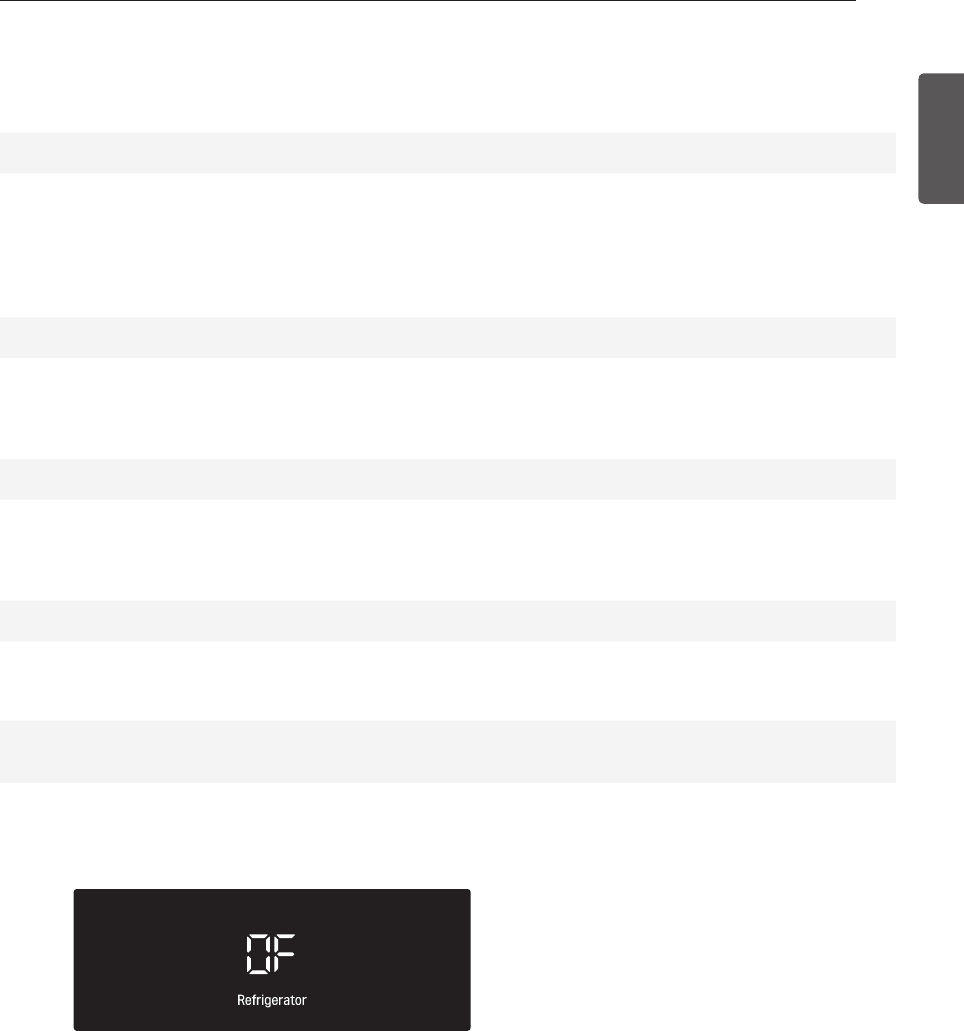
31TROUBLESHOOTING
ENGLISH
TROUBLESHOOTING
FAQs: Frequently Asked Questions
Q: What are the best temperature settings for my freezer?
A: The default setting for the freezer is 0° Fahrenheit (-18° Celsius). Adjust these settings as necessary
to keep food at desired temperatures. Ice cream should be firm and ice cubes should not melt in the
freezer. To switch the display from Fahrenheit to Celsius, press Freezer button first to wake the
display then press and hold the Freezer and Smart Grid buttons until you hear a beep and the settings
in the display change.
Q: How do I set the freezer temperatures?
A: Continually press the Freezer button on the control panel until the desired temperature appears. The
numbers will cycle from highest to lowest and then return to the highest again with continuous
pressing.
Q: Why do I hear a buzzing noise from my freezer periodically?
A: This may happen if you do not have a water source attached to your freezer and the icemaker is
turned on. If you do not have a water source attached to freezer you should turn the icemaker off on
control panel.
Q: Why does the icemaker tray look crooked?
A: This is a normal part of the icemaker cycle. The icemaker tray may appear level or with a slight tilt.
The change in position is to assist in the freezing process.
Q: My refrigerator is powered on and the controls are working, but it’s not cooling and the display
shows “OF” (see below). What is wrong?
A: The refrigerator is in Demo Mode. This mode disables cooling to save energy while the appliance is
on display in a store. To restore normal operation, press Freezer button first to wake the display then
press and hold the Freezer and Water Filter Reset buttons until you hear a beep and temperature
setting appear on display. Use the same procedure to return the refrigerator to Demo Mode, if desired.
* POWER
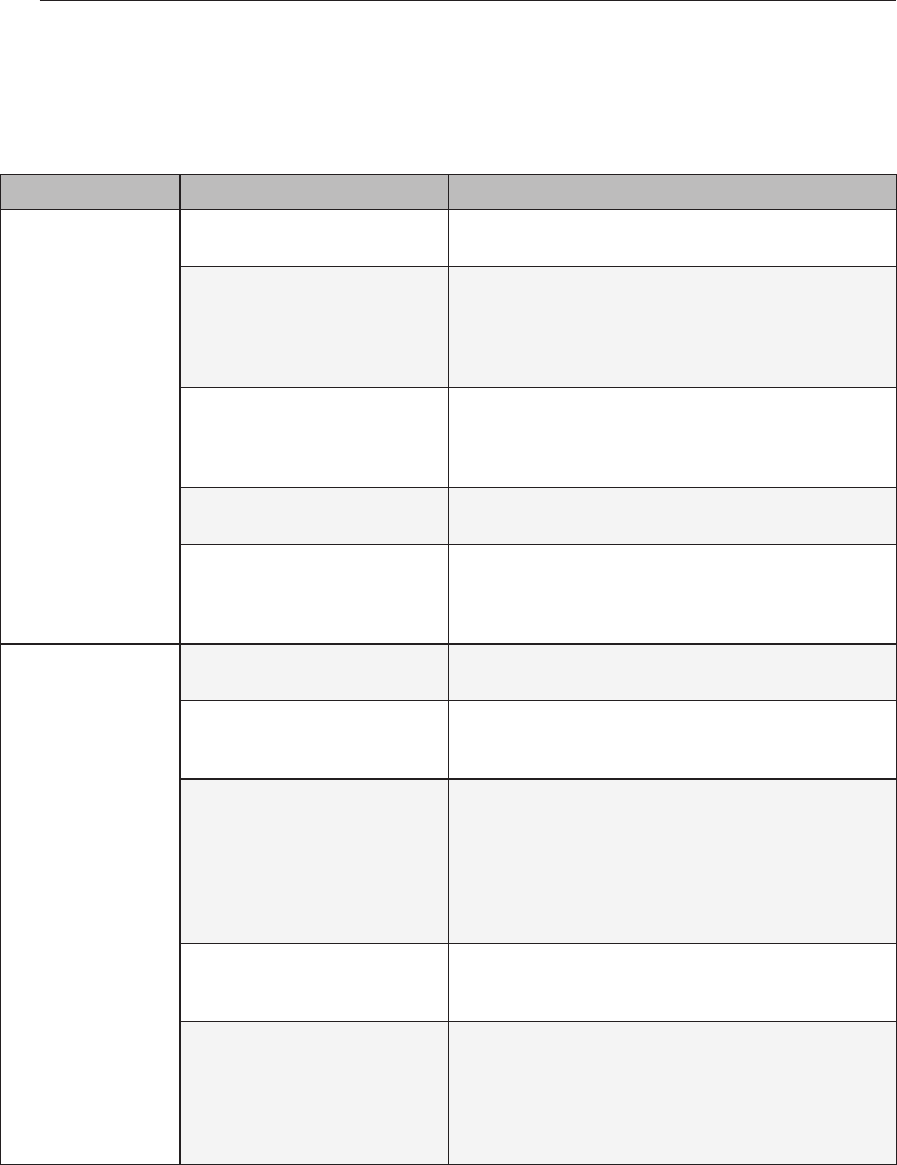
32 TROUBLESHOOTING
Before Calling for Service
Review this section before calling for service; doing so will save you both time and money.
Cooling
Problem Possible Cause Solutions
Refrigerator and
Freezer section
are not cooling.
The refrigerator control is set
to OFF (some models).
Turn the control ON. Refer to the Setting the Controls
section for proper temperature settings.
Refrigerator is set to Demo
Mode.
Demo Mode allows the lights and control display to
work normally while disabling cooling, to save energy
while the refrigerator is on the showroom floor. See
the FAQs section of this manual for instructions on
how to disable Demo Mode.
Refrigerator is in the defrost
cycle.
During the defrost cycle, the temperature of each
compartment may rise slightly. Wait 30 minutes and
confirm the proper temperature has been restored
once the defrost cycle has completed.
Refrigerator was recently
installed.
It may take up to 24 hours for each compartment to
reach the desired temperature.
Refrigerator was recently
relocated.
If the refrigerator was stored for a long period of time
or moved on its side, it is necessary for the refrigerator
to stand upright for 24 hours before connecting it to
power.
Cooling system
runs too much.
Refrigerator is replacing an
older model.
Modern refrigerators require more operating time but
use less energy due to more efficient technology.
Refrigerator was recently
plugged in or power
restored.
The refrigerator will take up to 24 hours to cool
completely.
The door is opened often or
a large amount of food / hot
food was added.
Adding food and opening the door warms the
refrigerator, requiring the compressor to run longer in
order to cool the refrigerator back down. In order to
conserve energy, try to get everything you need out of
the refrigerator at once, keep food organized so it is
easy to find, and close the door as soon as the food is
removed. (Refer to the Food Storage Guide.)
Doors are not closed
completely.
Firmly push the doors shut. If they will not shut all the
way, the "Doors will not close correctly or pop open"
section.
Refrigerator is installed in a
hot location.
The compressor will run longer under warm
conditions. At normal room temperatures (70 °F)
expect your compressor to run about 40 % to 80 % of
the time. Under warmer conditions, expect it to run
even more often. The refrigerator should not be
operated above 110 °F.
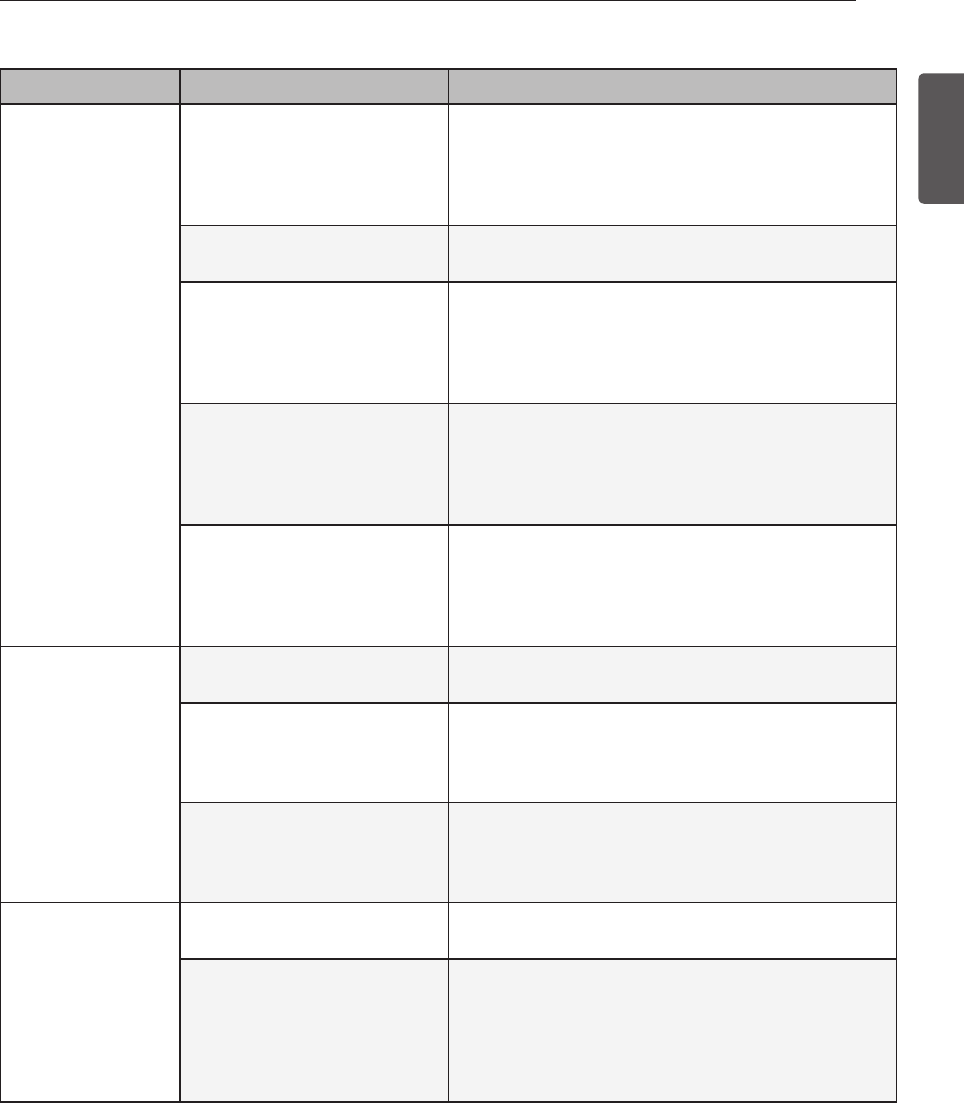
33TROUBLESHOOTING
ENGLISH
Cooling
Problem Possible Cause Solutions
Interior moisture
buildup.
Doors are opened often or
for long periods of time.
When the doors are opened often or for long periods
of time, warm, humid air enters the compartment. This
raises the temperature and moisture level within the
compartment. To lessen the effect, reduce the
frequency and duration of door openings.
Doors are not closed
correctly.
See the "Doors will not close correctly or pop open"
section.
Weather is humid.
Humid weather allows additional moisture to enter the
compartments when the doors are opened leading to
condensation or frost. Maintaining a reasonable level
of humidity in the home will help to control the amount
of moisture that can enter the compartments.
Defrost cycle recently
completed.
During the defrost cycle, the temperature of each
compartment may rise slightly and condensation may
form on the back wall. Wait 30 minutes and confirm
that the proper temperature has been restored once
the defrost cycle has completed.
Food is not packaged
correctly.
Food stored uncovered or unwrapped, and damp
containers can lead to moisture accumulation within
each compartment. Wipe all containers dry and store
food in sealed packaging to prevent condensation and
frost.
Food is freezing in
the refrigerator
compartment.
Food with high water content
was placed near an air vent.
Rearrange items with high water content away from
air vents.
Refrigerator temperature
control is set incorrectly.
If the temperature is too cold, adjust the control one
increment at a time and wait for the temperature to
stabilize. Refer to the Control Panel section for more
information.
Refrigerator is installed in a
cold location.
When the refrigerator is operated in temperature
below 41°F (5°C), food can freeze in the refrigerator
compartment. The refrigerator should not be operated
in temperature below 55°F (13°C).
Refrigerator or
Freezer section is
too warm.
Refrigerator was recently
installed.
It may take up to 24 hours for each compartment to
reach the desired temperature.
The air vents are blocked.
Cold air circulates from the
freezer to the fresh food
section and back again
through air vents in the wall
dividing the two sections.
Locate air vents by using your hand to sense airflow
and move all packages that block vents and restrict
airflow. Rearrange items to allow air to flow throughout
the compartment.
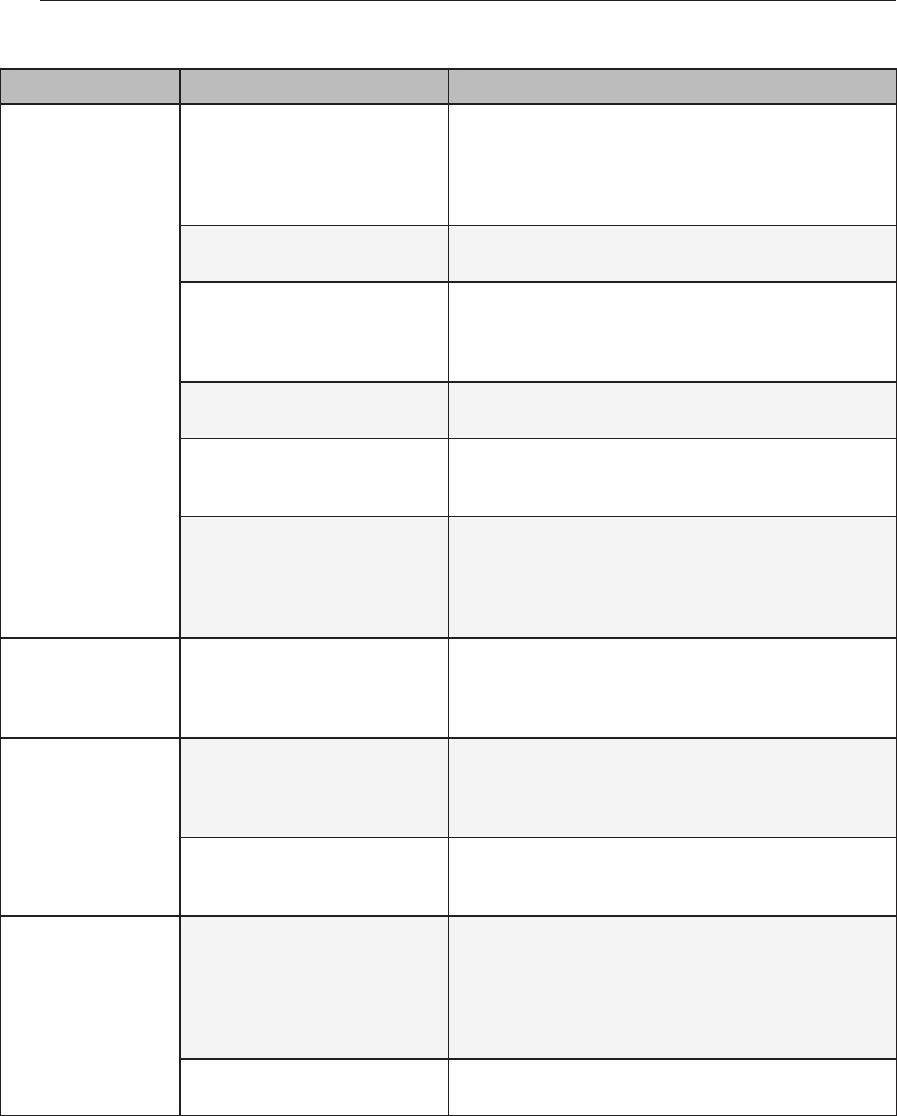
34 TROUBLESHOOTING
Cooling/Ice & Water
Problem Possible Cause Solutions
Refrigerator or
Freezer section is
too warm.
Doors are opened often or
for long periods of time.
When the doors are opened often or for long periods
of time, warm, humid air enters the compartment. This
raises the temperature and moisture level within the
compartment. To lessen the effect, reduce the
frequency and duration of door openings.
Unit is installed in a hot
location.
The refrigerator should not be operated in
temperatures above 110 °F.
A large amount of food or hot
food was added to either
compartment.
Adding food warms the compartment requiring the
cooling system to run. Allowing hot food to cool to
room temperature before putting it in the refrigerator
will reduce this effect.
Doors not closed correctly. See the Doors will not close correctly or pop open
section in Parts & Features Troubleshooting.
Temperature control is not
set correctly.
If the temperature is too warm, adjust the control one
increment at a time and wait for the temperature to
stabilize.
Defrost cycle has recently
completed.
During the defrost cycle, the temperature of each
compartment may rise slightly and condensation may
form on the back wall. Wait 30 minutes and confirm
the proper temperature has been restored once the
defrost cycle has completed.
Refrigerator or
Freezer section is
too cold.
Incorrect temperature control
settings.
If the temperature is too cold, adjust the control one
increment at a time and wait for the temperature to
stabilize. Refer to the Control Panel for more
information.
Frost or ice
crystals form on
frozen food (inside
of sealed
package).
Condensation from food with
a high water content has
frozen inside of the food
package.
This is normal for food items with a high water
content.
Food has been left in the
freezer for a long period of
time.
Do not store food items with high water content in the
freezer for a long period of time.
Frost or ice
crystals form on
frozen food
(outside of
package).
Door is opened frequently or
for long periods of time.
When the doors are opened often or for long periods
of time, warm, humid air enters the compartment. This
raises the temperature and moisture level within the
compartment. Increased moisture will lead to frost and
condensation. To lessen the effect, reduce the
frequency and duration of door openings.
Door is not closing properly. Refer to the Doors will not close correctly or pop open
section in the Troubleshooting section.
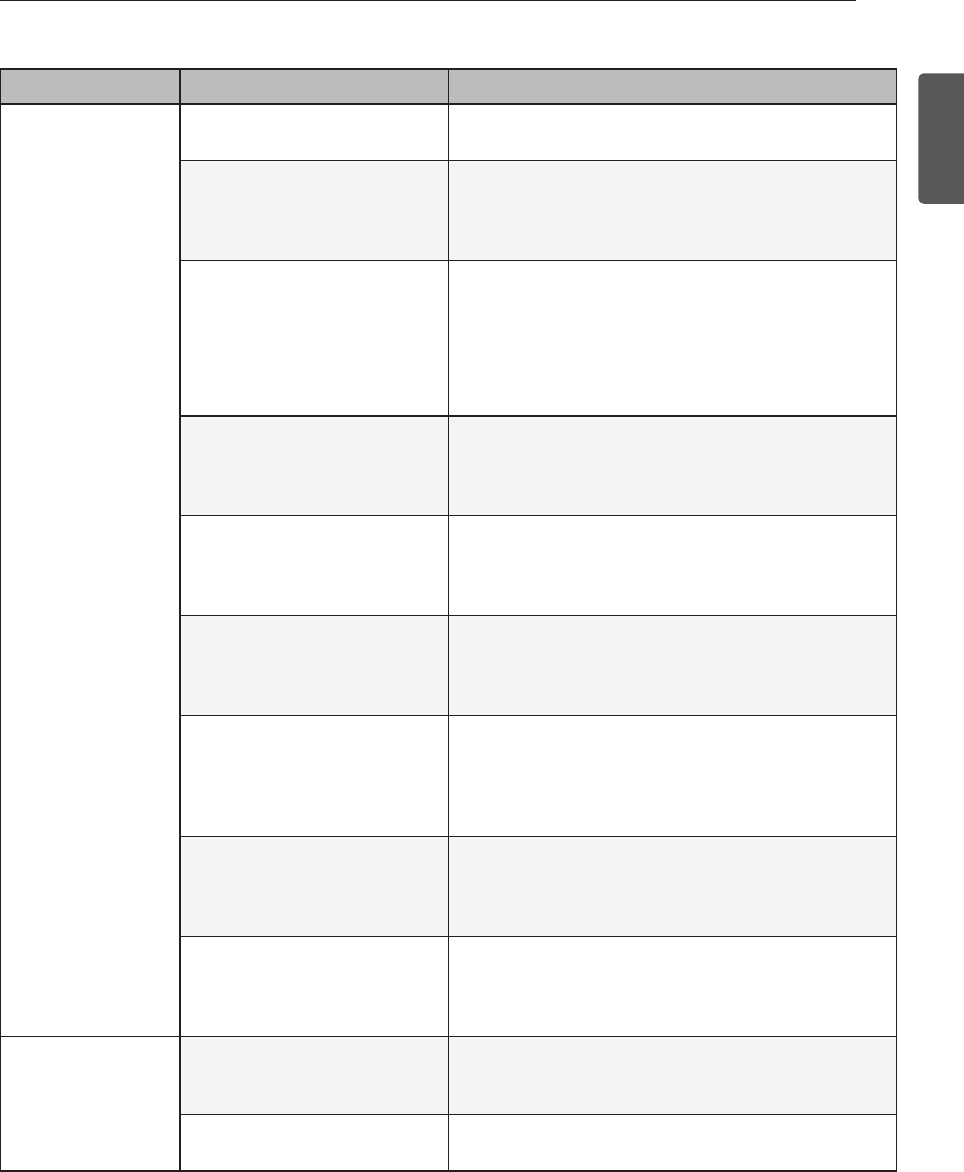
35TROUBLESHOOTING
ENGLISH
Ice & Water
Problem Possible Cause Solutions
Icemaker is not
making enough
ice.
Demand exceeds ice storage
capacity.
The icemaker will produce approximately 70-184
cubes in a 24 hour period.
House water supply is not
connected, valve is not
turned on fully, or valve is
clogged.
Connect the refrigerator to a cold water supply with
adequate pressure and turn the water shutoff valve
fully open. If the problem persists, it may be necessary
to contact a plumber.
Water filter has been
exhausted.
Replacing the water filter is recommended:
Approximately every six months.
When the water filter indicator turns on.
When the water dispenser output decreases.
When the ice cubes are smaller than normal.
Low house water supply
pressure.
The water pressure must be between 20 and 120 psi
on models without a water filter and between 40 and
120 psi on models with a water filter. If the problem
persists, it may be necessary to contact a plumber.
Reverse Osmosis filtration
system is used.
Reverse osmosis filtration systems can reduce the
water pressure below the minimum amount and result
in icemaker issues. (Refer to the Connecting the
Water Line section.)
Tubing connecting
refrigerator to house supply
valve is kinked.
The tubing can kink when the refrigerator is moved
during installation or cleaning resulting in reduced
water flow. Straighten or repair the water supply line
and arrange it to prevent future kinks.
Doors are opened often or
for long periods of time.
If the doors of the unit are opened often, ambient air
will warm the refrigerator which will prevent the unit
from maintaining the set temperature. Lowering the
refrigerator temperature can help, as well as not
opening the doors as frequently.
Doors are not closed
completely.
If the doors are not properly closed, ice production will
be affected. See the "Doors will not close correctly or
pop open" section in Parts & Features
Troubleshooting for more information.
The temperature setting for
the freezer is too warm.
The recommended temperature for the freezer
compartment for normal ice production is 0°F. If the
freezer temperature is warmer, ice production will be
affected.
Icemaker is not
making ice
Refrigerator was recently
installed or icemaker recently
connected.
It may take up to 24 hours for each compartment to
reach the desired temperature and for the icemaker to
begin making ice.
Icemaker not turned on. Locate the icemaker ON/OFF and confirm that it is
turned on.
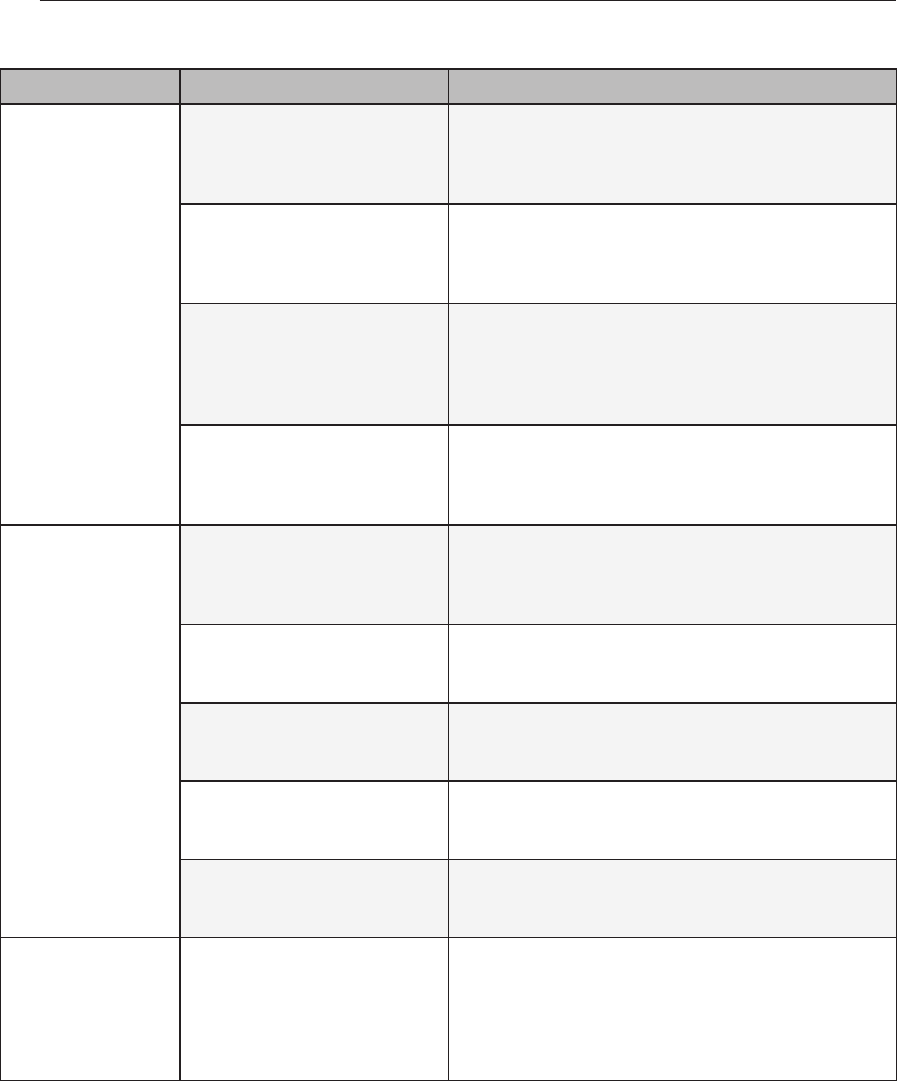
36 TROUBLESHOOTING
Ice & Water
Problem Possible Cause Solutions
Icemaker is not
making ice
The ice detecting sensor is
obstructed.
Foreign substances or frost on the ice-detecting
sensor can interrupt ice production. Make sure that
the sensor area is clean at all times for proper
operation.
The refrigerator is not
connected to a water supply
or the supply shutoff valve is
not turned on.
Connect the refrigerator to the water supply and turn
the water shutoff valve fully open.
Icemaker shutoff (arm or
sensor) obstructed.
If your icemaker is equipped with an ice shutoff arm,
make sure that the arm moves freely. If your icemaker
is equipped with the electronic ice shutoff sensor,
make sure that there is a clear path between the two
sensors.
Reverse osmosis water
filtration system is connected
to your cold water supply.
Reverse osmosis filtration systems can reduce the
water pressure below the minimum amount and result
in icemaker issues. (Refer to the Connecting the
Water Line section.)
Ice has bad taste
or odor.
Water supply contains
minerals such as sulfur.
A water filter may need to be installed to eliminate
taste and odor problems. NOTE: In some cases, a
filter may not help. It may not be possible to remove
all minerals/odor/taste in all water supplies.
Icemaker was recently
installed.
Ice that has been stored for too long will shrink,
become cloudy, and may develop a stale taste. Throw
away old ice and make a new supply.
The food has not been stored
properly in either
compartment.
Rewrap the food. Odors may migrate to the ice if food
is not wrapped properly.
The interior of the
refrigerator needs to be
cleaned.
See the Maintenance section for more information.
The ice storage bin needs to
be cleaned.
Empty and wash the bin (discard old cubes). Make
sure that the bin is completely dry before reinstalling
it.
Icemaker is
making too much
ice.
Icemaker shutoff (arm/
sensor) is obstructed.
Empty the ice bin. If your icemaker is equipped with
an ice shutoff arm, make sure that the arm moves
freely. If your icemaker is equipped with the electronic
ice shutoff sensor, make sure that there is a clear path
between the two sensors. Reinstall the ice bin and
wait 24 hours to confirm proper operation.
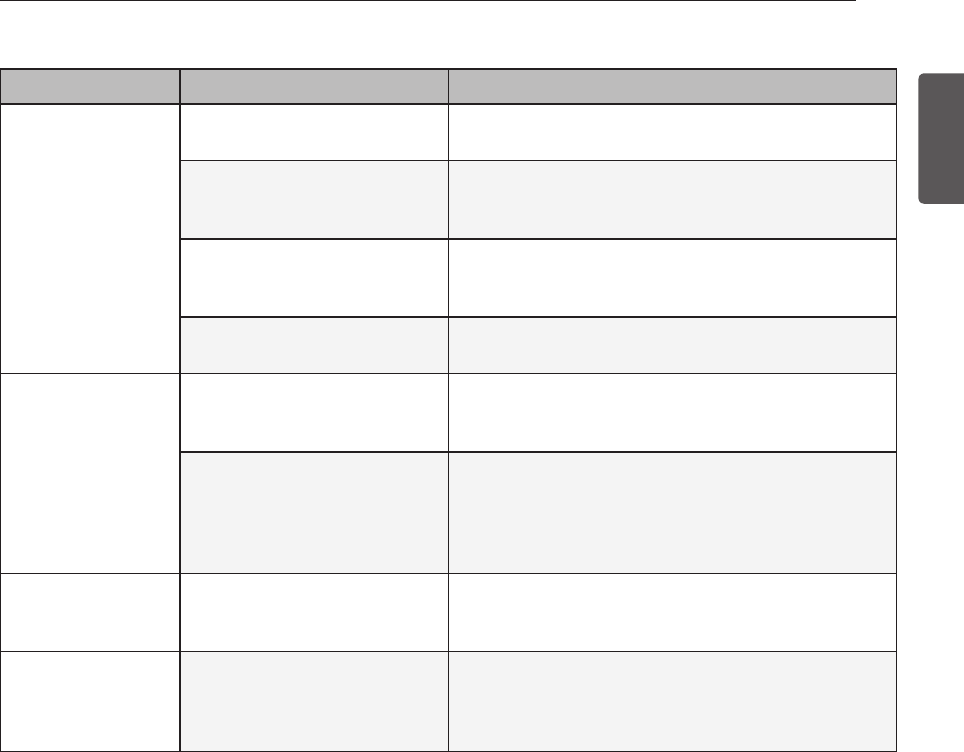
37TROUBLESHOOTING
ENGLISH
Parts & Features
Problem Possible Cause Solutions
Doors will not
close correctly or
pop open.
Food packages are blocking
the door open.
Rearrange food containers to clear the door and door
shelves.
Ice bin, crisper cover, pans,
shelves, door bins, or
baskets are out of position.
Push bins all the way in and put crisper cover, pans,
shelves and baskets into their correct positions. See
the Operation section for more information.
The doors were removed
during product installation
and not properly replaced.
Remove and replace the doors according to the
Removing and Replacing Refrigerator Handles and
Doors section.
Refrigerator is not leveled
properly.
See Door Alignment in the Refrigeration Installation
section to level refrigerator.
Doors are difficult
to open.
The gaskets are dirty or
sticky.
Clean the gaskets and the surfaces that they touch.
Rub a thin coat of appliance polish or kitchen wax on
the gaskets after cleaning.
Door was recently closed.
When you open the door, warmer air enters the
refrigerator. As the warm air cools, it can create a
vacuum. If the door is hard to open, wait one minute
to allow the air pressure to equalize, then see if it
opens more easily.
Lights do not
work. LED interior lighting failure.
The refrigerator compartment lamp is LED interior
lighting, and service should be performed by a
qualified technician.
The interior of the
refrigerator is
covered with dust
or soot.
The refrigerator is located
near a fire source, such as a
fireplace, chimney, or candle.
Make sure that the refrigerator is not located near a
fire source, such as a fireplace, chimney or candle.
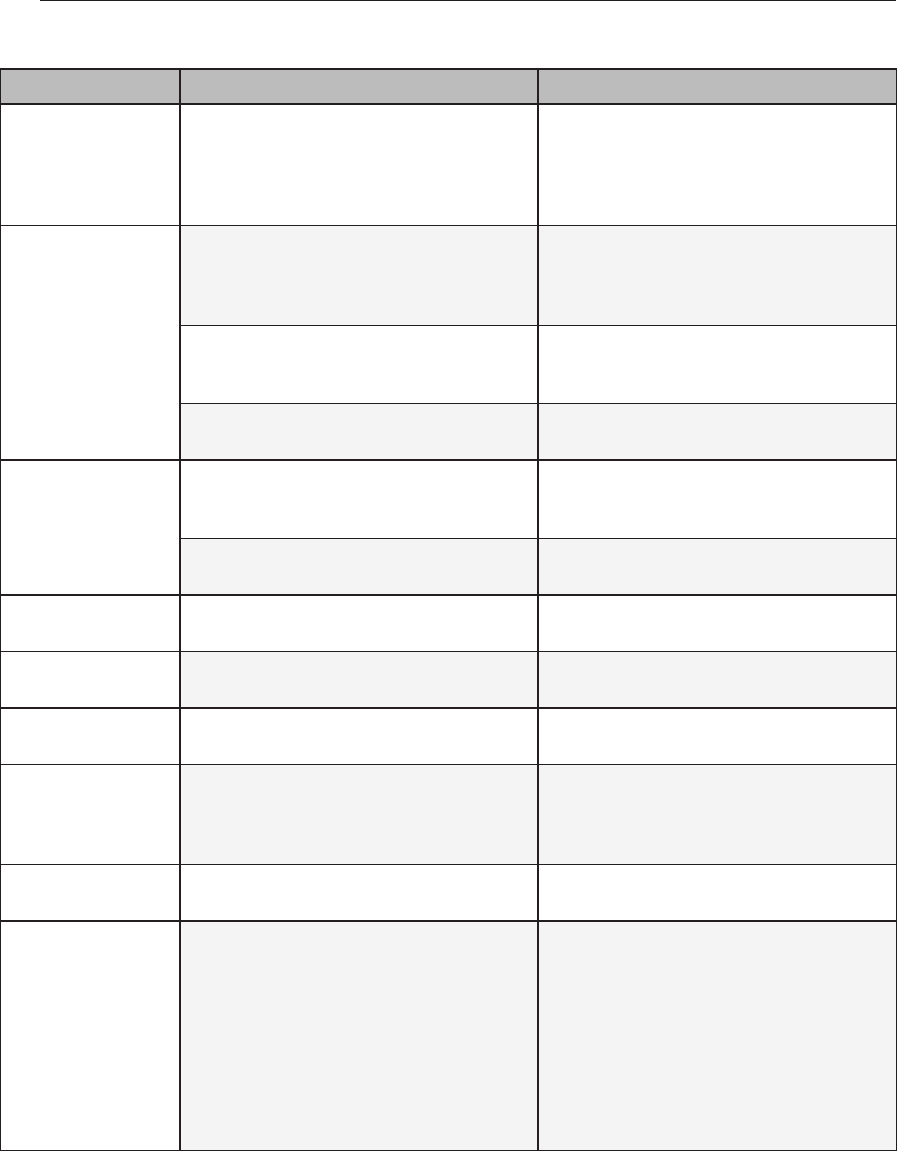
38 TROUBLESHOOTING
Noises
Problem Possible Cause Solutions
Clicking
The defrost control will click when the
automatic defrost cycle begins and
ends. The thermostat control (or
refrigerator control on some models)
will also click when cycling on and off.
Normal Operation
Rattling
Rattling noises may come from the flow
of refrigerant, the water line on the back
of the unit, or items stored on top of or
around the refrigerator.
Normal Operation
Refrigerator is not resting solidly on the
floor.
Floor is weak or uneven or leveling legs
need to be adjusted. See the Leveling and
Door Alignment section.
Refrigerator with linear compressor
was jarred while running. Normal Operation
Whooshing
Evaporator fan motor is circulating air
through the refrigerator and freezer
compartments.
Normal Operation
Air is being forced over the condenser
by the condenser fan. Normal Operation
Gurgling Refrigerant flowing through the cooling
system. Normal Operation
Popping Contraction and expansion of the inside
walls due to changes in temperature. Normal Operation
Sizzling Water dripping on the defrost heater
during a defrost cycle. Normal Operation
Vibrating
If the side or back of the refrigerator is
touching a cabinet or wall, some of the
normal vibrations may make an audible
sound.
To eliminate the noise, make sure that the
sides and back cannot vibrate against any
wall or cabinet.
Dripping Water running into the drain pan during
the defrost cycle. Normal Operation
Pulsating or high-
pitched sound
Your refrigerator is designed to run
more efficiently to keep your food items
at the desired temperature. The high
efficiency compressor may cause your
new refrigerator to run longer than your
old one, but it is still more energy
efficient than previous models. While
the refrigerator is running, it is normal
to hear a pulsating or high-pitched
sound.
Normal Operation
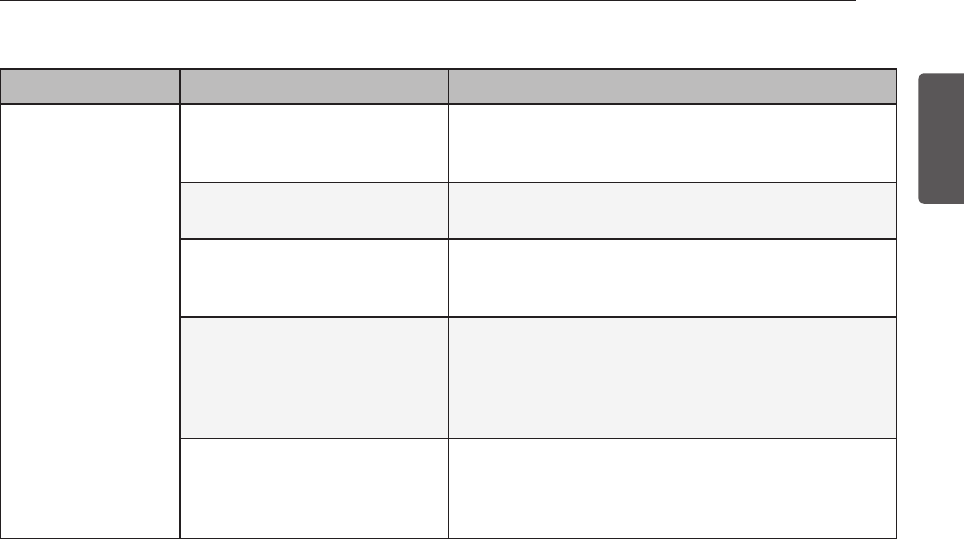
39TROUBLESHOOTING
ENGLISH
Wi-Fi Network
Problem Possible Cause Solutions
Your home
appliance and
smartphone is not
connected to the
Wi-Fi network.
The password for the Wi-Fi
that you are trying to connect
to is incorrect.
Find the Wi-Fi network connected to your smartphone
and remove it, then register your appliance on
SIGNATURE KITCHEN SUITE application.
Mobile data for your
smartphone is turned on.
Turn off the Mobile data of your smartphone and
register the appliance using the Wi-Fi network.
The wireless network name
(SSID) is set incorrectly.
The wireless network name (SSID) should be a
combination of English letters and numbers. (Do not
use special characters.)
The router frequency is not
2.4 GHz.
Only a 2.4 GHz router frequency is supported. Set the
wireless router to 2.4 GHz and connect the appliance
to the wireless router. To check the router frequency,
check with your Internet service provider or the router
manufacturer.
The distance between the
appliance and the router is
too far.
If the distance between the appliance and the router
is too far, the signal may be weak and the connection
may not be configured correctly. Move the location of
the router so that it is closer to the appliance.
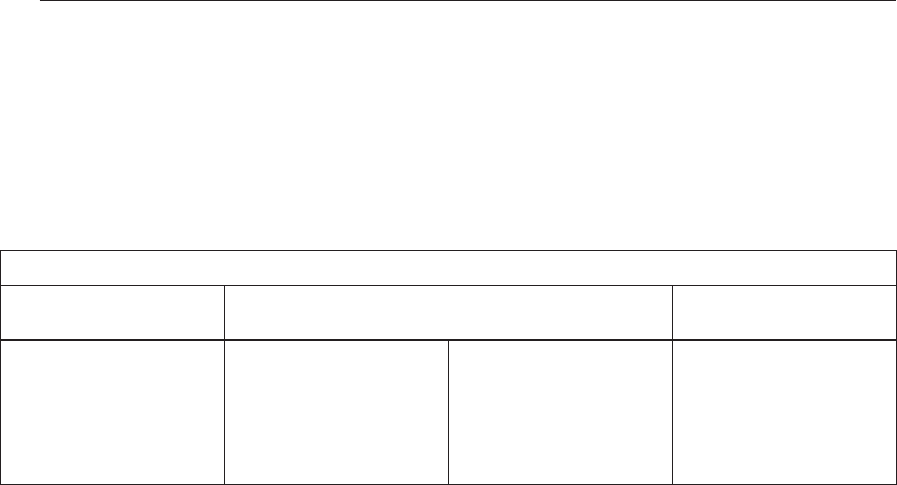
40 WARRANTY
SIGNATURE KITCHEN SUITE
REFRIGERATOR LIMITED WARRANTY - U.S.A
Should your Signature Kitchen Suite Refrigerator ("Product") fail due to a defect in materials or workmanship
under normal home use, during the warranty period set forth below, Signature Kitchen Suite will at its option
repair or replace the product. This limited warranty is valid only to the original retail purchaser of the product and
applies only when purchased and used within the United States including U.S. Territories. Proof of original retail
purchase is required to obtain warranty service under this limited warranty.
WARRANTY PERIOD
Refrigerator Sealed System
(Condenser, Dryer, Connecting Tube and Evaporator) Linear Compressor
Three (3) years from the
date of original retail
purchase
Parts and Labor (internal/
functional parts only)
Three (3) years from the
date of original retail
purchase
Parts and Labor
Seven (7) years from the
date of original retail
purchase
Parts only
(Consumer will be charged
for labor)
Ten (10) years from the
date of original retail
purchase
Part only
(Consumer will be charged
for labor)
Noises associated with normal operation and failure to follow instructions found in the use and care and
installation guides or operating the unit in an unsuitable environment will not be covered under this
warranty.
•Replacement products and parts are warranted for the remaining portion of the original warranty period or
ninety (90) days, whichever is greater.
•Replacement products and parts may be new or remanufactured.
THIS WARRANTY IS IN LIEU OF ANY OTHER WARRANTY, EXPRESS OR IMPLIED, INCLUDING WITHOUT
LIMITATION, ANY WARRANTY OF MERCHANTABILITY OR FITNESS FOR A PARTICULAR PURPOSE. TO
THE EXTENT ANY IMPLIED WARRANTY IS REQUIRED BY LAW, IT IS LIMITED IN DURATION TO THE
EXPRESS WARRANTY PERIOD ABOVE. NEITHER THE MANUFACTURER NOR ITS U.S. DISTRIBUTOR
SHALL BE LIABLE FOR ANY INCIDENTAL, CONSEQUENTIAL, INDIRECT, SPECIAL, OR PUNITIVE
DAMAGES OF ANY NATURE, INCLUDING WITHOUT LIMITATION, LOST REVENUES OR PROFITS, OR
ANY OTHER DAMAGE WHETHER BASED IN CONTRACT, TORT, OR OTHERWISE. Some states do not
allow the exclusion or limitation of incidental or consequential damages or limitations on how long an implied
warranty lasts, so the above exclusion or limitation may not apply to you. This warranty gives you specific legal
rights and you may also have other rights that vary from state to state.
THIS LIMITED WARRANTY DOES NOT COVER:
•Service trips to deliver, pick up, install, or repair the product; instruct the customer on operation of the product;
repair or replace fuses or correct wiring or plumbing, or correction of unauthorized repairs/installation.
•Failure of product to perform during power failures and interruptions or inadequate electrical service.
•Damage caused by leaky or broken water pipes, frozen water pipes, restricted drain lines, inadequate or
interrupted water supply or inadequate supply of air.
•Damage resulting from operating the product in a corrosive atmosphere or contrary to the instructions outlined
in the product owner’s manual.
•Damage to the product caused by accidents, pests and vermin, lightning, wind, re, oods, or acts of God.
•Damage resulting from misuse, abuse, improper installation, repair, or maintenance. Improper repair includes
use of parts not approved or specied by Signature Kitchen Suite.
•Damage or failure caused by unauthorized modication or alteration, or if it is used for other than the intended
purpose, or any water leakage where the unit was not properly installed.
•Damage or failure caused by incorrect electrical current, voltage, or plumbing codes, commercial or industrial
use, or use of accessories, components, or consumable cleaning products that are not approved by Signature
Kitchen Suite.
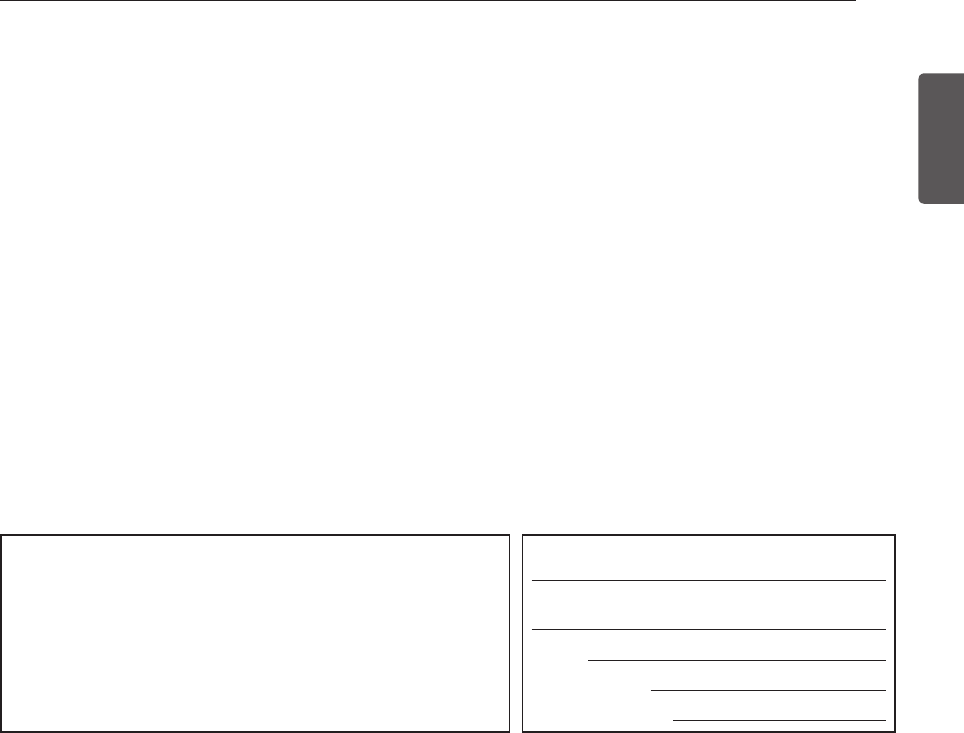
41WARRANTY
ENGLISH
•Damage caused by transportation and handling, including scratches, dents, chips, and/or other damage to the
nish of your product, unless such damage results from defects in materials or workmanship and is reported
within one (1) week of delivery (Call: 1-855-790-6655).
•Damage or missing items to any display, open box, discounted, or refurbished product.
•Products with original serial numbers that have been removed, altered, or can not be readily determined.
Model and Serial numbers, along with original retail sales receipt, are required for warranty validation.
•Increases in utility costs and additional utility expenses.
•Replacement of light bulbs, lters, or any consumable parts.
•Repairs when your product is used in other than normal and usual household use (e.g. commercial use,
ofces, and recreational facilities) or contrary to the instructions outlined in the product owner’s manual.
•Costs associated with removal of your product from your home for repairs.
•The removal and reinstallation of the product if it is installed in an inaccessible location or is not installed in
accordance with published installation instructions, including Signature Kitchen Suite’s owner’s and installation
manuals.
•Shelves, door bins, drawers, handles, accessories, and other parts besides those that were originally included
with this particular model.
The cost of repair or replacement under these excluded circumstances shall be borne by the consumer.
Write your warranty information below:
Product Registration Information:
Model:
Serial Number:
Date of Purchase:
For complete warranty details and customer assistance,
please call or visit our website:
Call 1-855-790-6655 (24 hours a day, 365 days a year) and select
the appropriate option from the menu, or visit our website at
www.thesignaturekitchen.com
Or by mail: Signature Kitchen Suite Customer Information Center:
P. O. Box 240007, 201 James Record Road Huntsville,
Alabama 35813 ATTN: CIC

42 MeMo
MEMO

43MEMO
MEMO
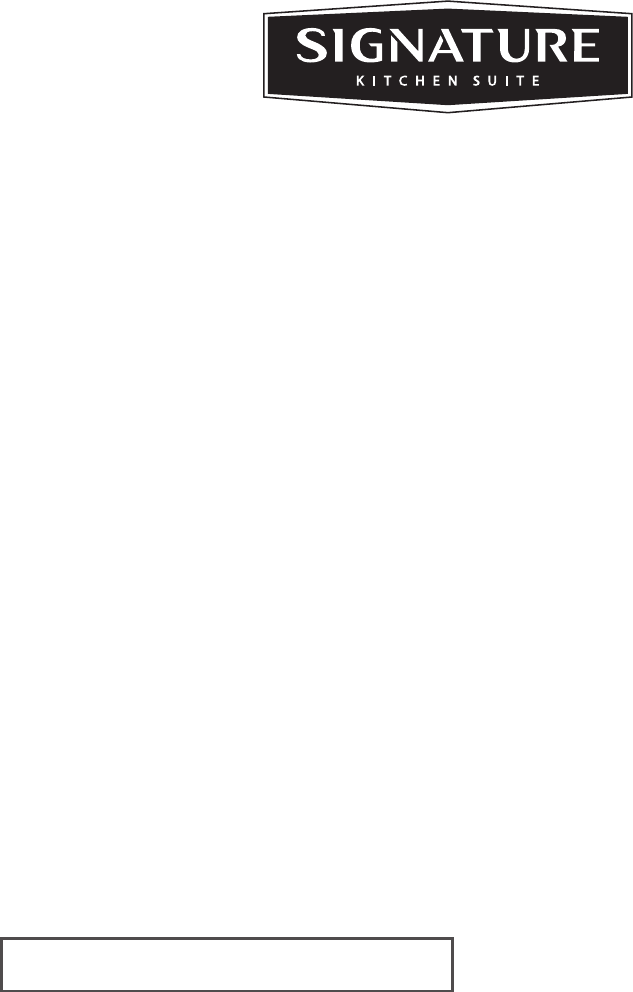
Customer Information Center
For inquires or comments, call;
1-855-790-6655 USA, Consumer User